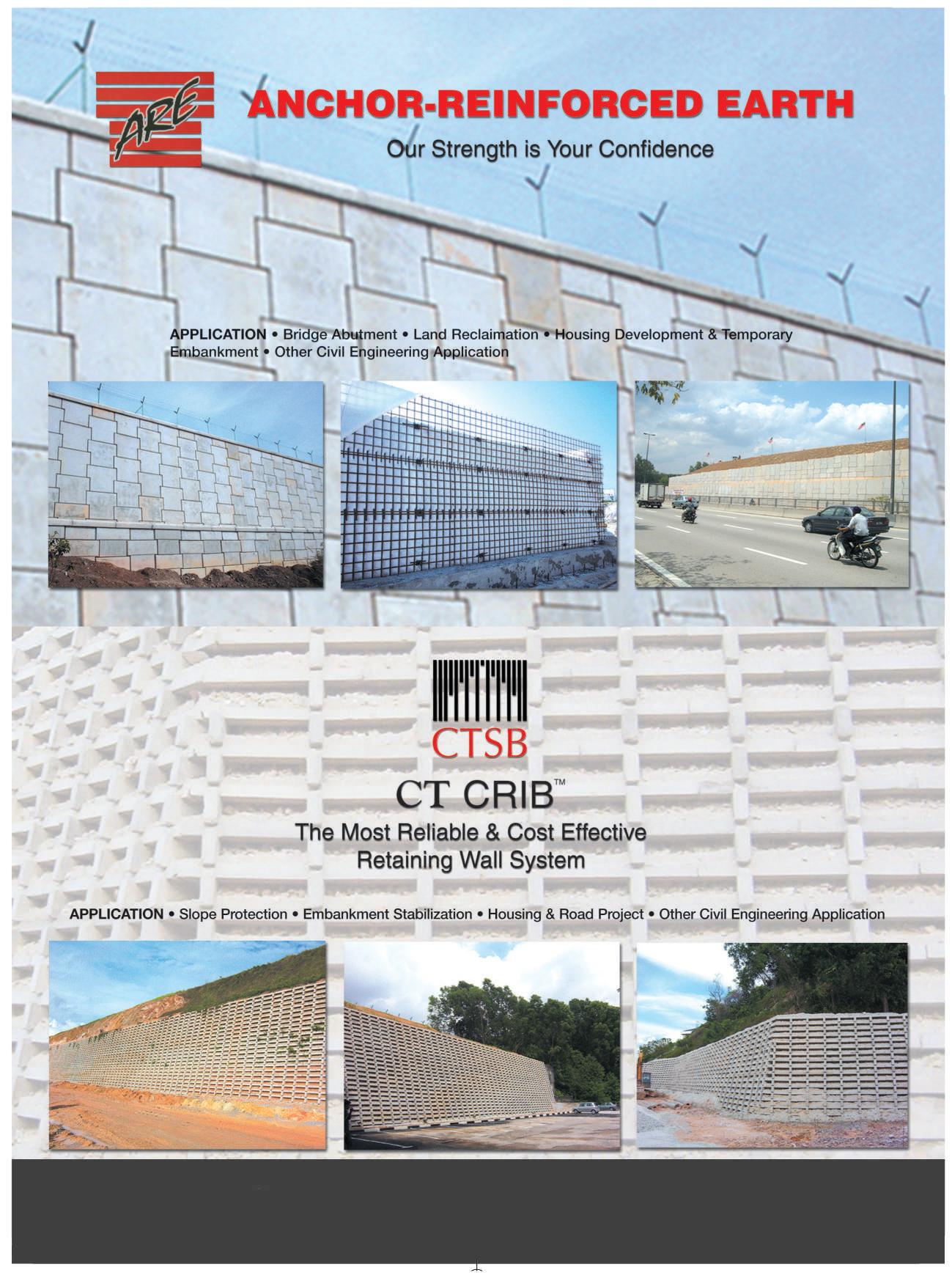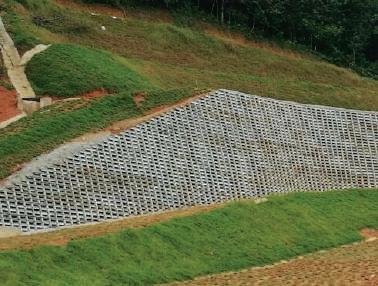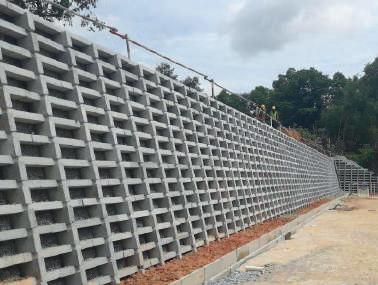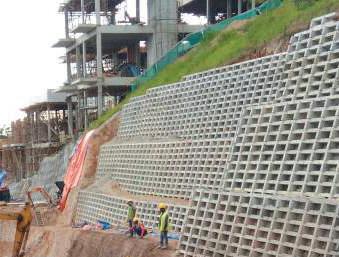
































This standalone security station perfectly suits areas where other power supplies and Ethernet cables cannot reach, but demand robust performance. Permanently installed, it provides 24/7 monitoring at power transmission facilities, rivers and canals, and farms and forests. But this system can also be used in temporary installations such as road maintenance sites, open-air music festivals, and a multitude more.



Solar-Powered Standalone Security S of continuous operation without sunlight
· Smart power management and battery protection
· Wind-resistant and waterproof design
· Easy installation with a net weight of 14 kg

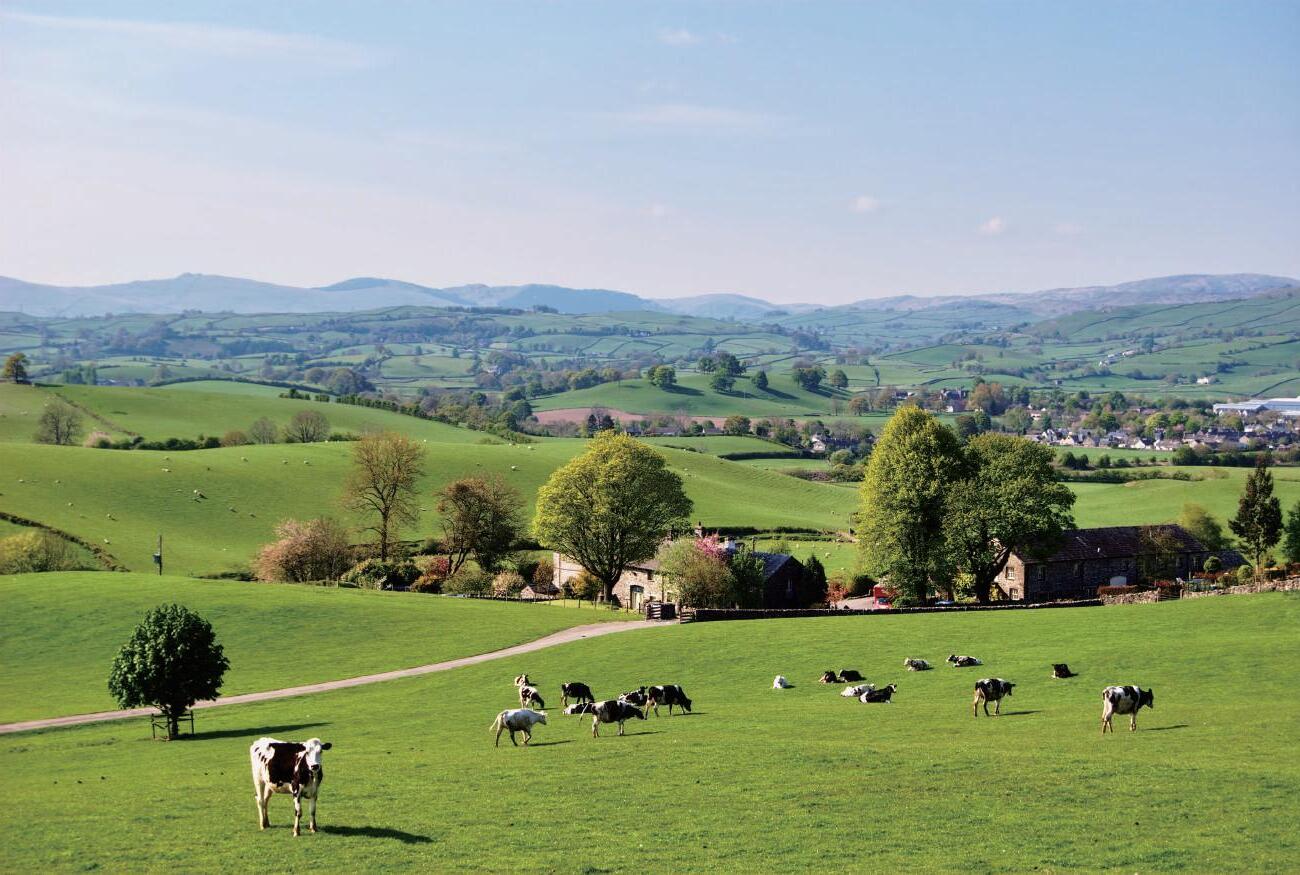
Taman Tun Dr. Ismail, 60000 Kuala Lumpur
T +60327224000
F +60327224022
Sales Email: sales.my@hikvision.com
301, Level 3 of Menara LGB No. 1 Jalan Wan Kadir, @HikvisionMalaysia @HikvisionAPAC


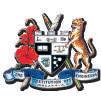
Number 11, NOVEMBER 2020
IEM Registered on 1 May 1959
MAJLIS BAGI SESI 2020/2021 (IEM COUNCIL SESSION 2020/2021)
YANG DIPERTUA / PRESIDENT
Ir. Ong Ching Loon
TIMBALAN YANG DIPERTUA / DEPUTY PRESIDENT
Ir. Prof. Dr Norlida bt Buniyamin
NAIB YANG DIPERTUA / VICE PRESIDENTS
Y.Bhg. Dato’ Ir. Ahmad Murad bin Omar, Ir. Dr Tan Chee Fai, Ir. Mohd Aman bin Hj. Idris,
Ir. Dr Wang Hong Kok, Ir. Dr Leong Wai Yie, Ir. Mohd Khir bin Muhammad, Ir. Prof. Dr Ruslan bin Hassan
SETIAUSAHA KEHORMAT / HONORARY SECRETARY
Ir. Dr David Chuah Joon Huang
BENDAHARI KEHORMAT / HONORARY TREASURER Ir. Chen Harn Shean
BEKAS YANG DIPERTUA TERAKHIR / IMMEDIATE PAST PRESIDENT Ir. David Lai Kong Phooi
BEKAS YANG DIPERTUA / PAST PRESIDENTS
Y.Bhg. Academician Tan Sri Datuk Ir. (Dr) Hj. Ahmad Zaidee bin Laidin, Y.Bhg. Dato’ Ir. Dr Gue See Sew, Y.Bhg. Dato’ Paduka Ir. Keizrul bin Abdullah, Y.Bhg. Academician Tan Sri Dato’ Ir. Prof. Dr Chuah Hean Teik, Y. Bhg. Dato’ Ir. Lim Chow Hock
WAKIL AWAM / CIVIL REPRESENTATIVE
Ir. Yap Soon Hoe
WAKIL MEKANIKAL / MECHANIC AL REPRESENTATIVE
Ir. Dr Aidil bin Chee Tahir
WAKIL ELEKTRIK / ELECTRICAL REPRESENTATIVE
Ir. Francis Xavier Jacob
WAKIL STRUKTUR / STRUCTURAL REPRESENTATIVE
Ir. Gunasagaran Kristnan
WAKIL KIMIA / CHEMICAL REPRESENTATIVE
Ir. Prof. Dr Lee Tin Sin
WAKIL LAIN-LAIN DISPLIN / REPRESENTATIVE TO OTHER DISCIPLINES
Ir. Dr Bhuvendhraa Rudrusamy
WAKIL MULTIMEDIA DAN ICT / ICT AND MULTIMEDIA REPRESENTATIVE
Ir. Jeewa Vengadasalam
WAKIL JURUTERA WANITA / WOMEN ENGINEERS REPRESENTATIVE
Ir. Rusnida bt Talib
WAKIL BAHAGIAN JURUTERA SISWAZAH / YOUNG ENGINEERS SECTION REPRESENTATIVES
Dr Yew Weng Kean, Mr. Kuugan Thangarajoo, Mr. Lim Yiren, Ms. Tiang Kor Lin, Mr. Tan Teck Ying
AHLI MAJLIS / COUNCIL MEMBERS
Y.Bhg. Dato’ Ir. Nor Hisham Mohd Ghazali, Ir. Toh Chin Kok, Ir. Dr Jeyanthi Ramasamy, Ir. Yim Hon Wa, Ir. Yam Teong Sian, Y.Bhg. Dato’ Ir. Fakharazi bin Wahijan, Ir. Yasotha Ramachandran Chetty, Ir. Mohmad Asari bin Daud, Ir. Ng Beng Hooi, Ir. Dr Lai Khin Wee, Ir. Dr Tan Kuang Leong, Ir. Mah Siew Kien, Y.Bhg. Dato’ Ir. Mohd Azmi bin Ismail, Ir. Ng Yong Kong, Ir. Dr Mui Kai Yin, Y.Bhg. Dato’ Ir. Noor Azmi bin Jaafar, Ir. Ting Chek Choon, Ir. Sukhairul Nizam bin Abdul Razak, Ir. Lai Sze Ching, Y.Bhg. Dato’ Ir. Dr Ahmad Anuar bin Othman, Ir. Dr Chan Swee Huat, Ir. Ellias bin Saidin, Ir. Mohd Radzi bin Salleh, Dato’ Ir. Hj. Anuar bin Yahya, Ir. Dr Teo Fang Yenn, Ir. Prof. Dr Jeffrey Chiang Choong Luin AHLI MAJLIS / COUNCIL MEMBERS BY INVITATION
Y.Bhg. Dato’ Seri Ir. Dr Zaini bin Ujang, Ir. Dr Lee Yun Fook, Ir. Fam Yew Hin PENGERUSI CAWANGAN / BRANCH CHAIRMAN
1. Pulau Pinang: Ir. Yau Ann Nian
2. Selatan: Ir. Wong Yee Foong
3. Perak: Ir. Simon Yeong Chin Chow
4. Kedah-Perlis: Ir. Mohamad Shaiful Asrul bin Ishak
5. Negeri Sembilan: Ir. Chong Chee Yen
6. Kelantan: Ir. Shaipuddin bin Shapii
7. Terengganu: Ir. Abdullah Zawawi bin Mohamad Noor
8. Melaka: Ir. Puvanasvaran a/l Perumal
9. Sarawak: Ir. Haidel Heli
10. Sabah: Ir. Jeffrey Ng Vun Ping
11. Miri: Ir. Wong Siong Ung
12. Pahang: Ir. Ahmad Kamal bin Kunji
AHLI JAWATANKUASA INFORMASI DAN PENERBITAN/ STANDING COMMITTEE ON INFORMATION AND PUBLICATIONS 2020/2021
Pengerusi/Chairman: Ir. Dr Leong Wai Yie Naib Pengerusi/Vice Chairman: Ir. Fam Yew Hin Setiausaha/Secretary: Ir. Lau Tai Onn Ketua Pengarang/Chief Editor: Ir. Prof. Dr Leong Wai Yie Pengarang Prinsipal Buletin/ Principle Bulletin Editor: Ir. Dr Bhuvendhraa Rudrusamy Pengarang Prinsipal Jurnal/Principal Journal Editor: Ir. Dr David Chuah Joon Huang Pengerusi Perpustakaan/Library Chairman: Ir. C.M.M. Aboobucker Ahli-Ahli/Committee Members: Ir. Ong Guan Hock, Ir. Yee Thien Seng, Ir. Chin Mee Poon, Ir. Dr Oh Seong Por, Ir. Prof. Dr Abdul Aziz bin Abdul Samad, Dr Sudharshan N. Raman, Ir. Dr Lai Khin Wee, Ir. Tiong Ngo Pu, Ir. Dr Lee Tin Sin, Ir. Yam Teong Sian, Ir. Yap Soon Hoe, Ir. Toh Chin Kok
LEMBAGA PENGARANG/EDITORIAL BOARD 2020/2021 Ketua Pengarang/Chief Editor: Ir. Dr Leong Wai Yie Pengarang Prinsipal Buletin/ Principle Bulletin Editor: Ir. Dr Bhuvendhraa Rudrusamy Pengarang Prinsipal Jurnal/Principal Journal Editor: Ir. Dr David Chuah Joon Huang Ahli-ahli/Committee Members: Ir. Lau Tai Onn, Ir. Ong Guan Hock, Ir. Yee Thien Seng, Ir. Dr Oh Seong Por, Dr Sudharshan N. Raman, Ir. Dr Lai Khin Wee Secretariat: Janet Lim, May Lee
THE INSTITUTION OF ENGINEERS, MALAYSIA Bangunan Ingenieur, Lots 60 & 62, Jalan 52/4, P.O. Box 223, (Jalan Sultan), 46720 Petaling Jaya, Selangor Darul Ehsan. Tel: 603-7968 4001/4002 Fax: 603-7957 7678 E-mail: sec@iem.org.my Homepage: http://www.myiem.org.my
Leading the Way in Petrochemicals Sector
Pengerang Integrated Complex: World Class Achievement
Petrochemicals Industry: Past, Present and Future
The Rights of Grad. Eng., P.Tech., P.Eng., and PEPC
- 33 FORUMS
Talent Development & Lessons Learned from PIC
Standard Specification of Materials for Cladding & Other Building Accessories 14 - 29
Optimising Hydrogen Resources with Process Integration Technique
Engineering Education Before, During and Post MCO
AGM of IEM Negeri Sembilan Branch
Umbrella’ Market


DIMENSION PUBLISHING SDN. BHD. [ 199701034233 (449732-T) ]
Level 18-01-02, PJX-HM Shah Tower, No. 16A, Persiaran Barat, 46050 Petaling Jaya, Selangor Darul Ehsan, Malaysia. Tel: +(603) 7493 1049 Fax: +(603) 7493 1047
E-mail: info@dimensionpublishing.com Website: www.dimensionpublishing.com
CHAIRMAN
ROBERT MEBRUER
CEO/PUBLISHER
PATRICK LEUNG
GENERAL MANAGER
SHIRLEY THAM ● shirley@dimensionpublishing.com
HEAD OF MARKETING & BUSINESS DEVELOPMENT
JOSEPH HOW ● joseph@dimensionpublishing.com
PRODUCTION EDITOR
TAN BEE HONG ● bee@dimensionpublishing.com
CONTRIBUTING WRITERS
PUTRI ZANINA ● putri@dimensionpublishing.com
LAURA LEE ● laura@dimensionpublishing.com
SENIOR GRAPHIC DESIGNER
SUMATHI MANOKARAN ● sumathi@dimensionpublishing.com
GRAPHIC DESIGNER
SOFIA ● sofia@dimensionpublishing.com
ADVERTISING CONSULTANTS
THAM CHOON KIT ● ckit@dimensionpublishing.com
ACCOUNTS CUM ADMIN EXECUTIVE
YEN YIN ● yenyin@dimensionpublishing.com
For advertisement placements and subscriptions, please contact: DIMENSION PUBLISHING SDN. BHD. [ 199701034233 (449732-T) ]
Level 18-01-02, PJX-HM Shah Tower, No.16A, Persiaran Barat, 46050 Petaling Jaya, Selangor Darul Ehsan, Malaysia. Tel: +(603) 7493 1049 Fax: +(603) 7493 1047 E-mail: info@dimensionpublishing.com
Subscription Department E-mail: info@dimensionpublishing.com
JURUTERA is published and printed monthly by Dimension Publishing Sdn. Bhd.
JURUTERA MONTHLY CIRCULATION: OVER 50,000 MEMBERS
Submission or placement of articles in JURUTERA could be made to the:Chief Editor
THE INSTITUTION OF ENGINEERS , MALAYSIA (IEM) Bangunan Ingenieur, Lots 60 & 62, Jalan 52/4, P.O. Box 223 (Jalan Sultan), 46720 Petaling Jaya, Selangor. Tel: +(603) 7968 4001/4002 Fax: +(603) 7957 7678 E-mail: pub@iem.org.my or sec@iem.org.my IEM Website: http://www.myiem.org.my
© 2020, The Institution of Engineers, Malaysia (IEM) and Dimension Publishing Sdn. Bhd.
PUBLICATION DISCLAIMER
The publication has been compiled by both IEM and Dimension with great care and they disclaim any duty to investigate any products, process, services, designs and the like which may be described in this publication. The appearance of any information in this publication does not necessarily constitute endorsement by IEM and Dimension. There is no guarantee that the information in this publication is free from errors. IEM and Dimension do not necessarily agree with the statement or the opinion expresssed in this publication.
COPYRIGHT
JURUTERA Bulletin of IEM is the official magazine of The Institution of Engineers, Malaysia (IEM) and is published by Dimension Publishing Sdn. Bhd. The Institution and the Publisher retain the copyright over all materials published in the magazine. No part of this magazine may be reproduced and transmitted in any form or stored in any retrieval system of any nature without the prior written permission of IEM and the Publisher.
by Ir. Roznan Abdul Rashid Chairman, Oil, Gas and Mining Engineering Technical Division
This month, JURUTERA focuses on the Pengerang Integrated Complex (PIC), a US$27 billion development spread over 6,303 acres of land in Pengerang, Johor. It includes a Crude Distillation Unit (CDU), Steam Cracker Complex (SCC) and Refinery & Petrochemical Integrated Development (RAPID) as well as LNG Regasification Terminal, Cogen Power Plant, air separation unit, water supply facilities, solid product handling facilities, jetty and liquid bulk terminal.

We interviewed Ir. Dr Colin Wong Hee Huing, Senior Vice-President of PETRONAS and Chief Executive Officer of PETRONAS Refinery & Petrochemical Corporation (PRPC) on the achievements, challenges and initiatives in engineering, project management and safety as well as construction, commissioning and operations of the complex. Ir. Dr Colin also talks about the future growth of PIC.
The project had benefited hundreds of local engineers of multi disciplines, including those in Petronas, EPCC contractors and other service providers who worked together as a team on the project. It also provided job opportunities to locals and foreigners. At the peak of the construction phase, it had a 60,000-strong multi-national workforce. The project execution and achievements were captured in National Geographic’s Megastructures.
I hope the articles will give the readers more understanding and appreciation of the petrochemicals sector in general and specifically the PIC.
by Ir. Dr Bhuvendhraa Rudrusamy Principle Bulletin Editor
Even as early as secondary school, my dream was to be an engineer, so I enrolled myself in a technical school. At that time, with the growing awareness that engineering would be the key to success for the nation’s growth, many schools had been converted into technical schools.
I dabbled with fundamental knowledge in chemistry in upper secondary and I enjoyed electrical and electronics engineering as well as engineering drawing subjects. The knowledge I gained from these fundamental studies was much needed in my tertiary education.
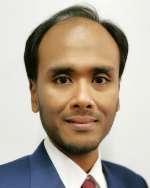
Today, the petrochemicals industry in Malaysia has grown immensely, positively impacting the country both socially and economically. I feel that similar effort should be put into the environmental aspects too, as Earth is the only planet that we have (for now). That said, in addition to subject matters, future engineers should equip themselves with social, economic and environmental knowledge when they come up with engineering solutions.























I am writing this during the second conditional movement control order (CMCO) in the Klang Valley and I would like to wish everyone continuous good health. Stay safe. I would also like to wish all Hindu members “Happy Deepavali”; the festival of lights symbolises the spiritual victory of light over darkness, good over evil and knowledge over ignorance.
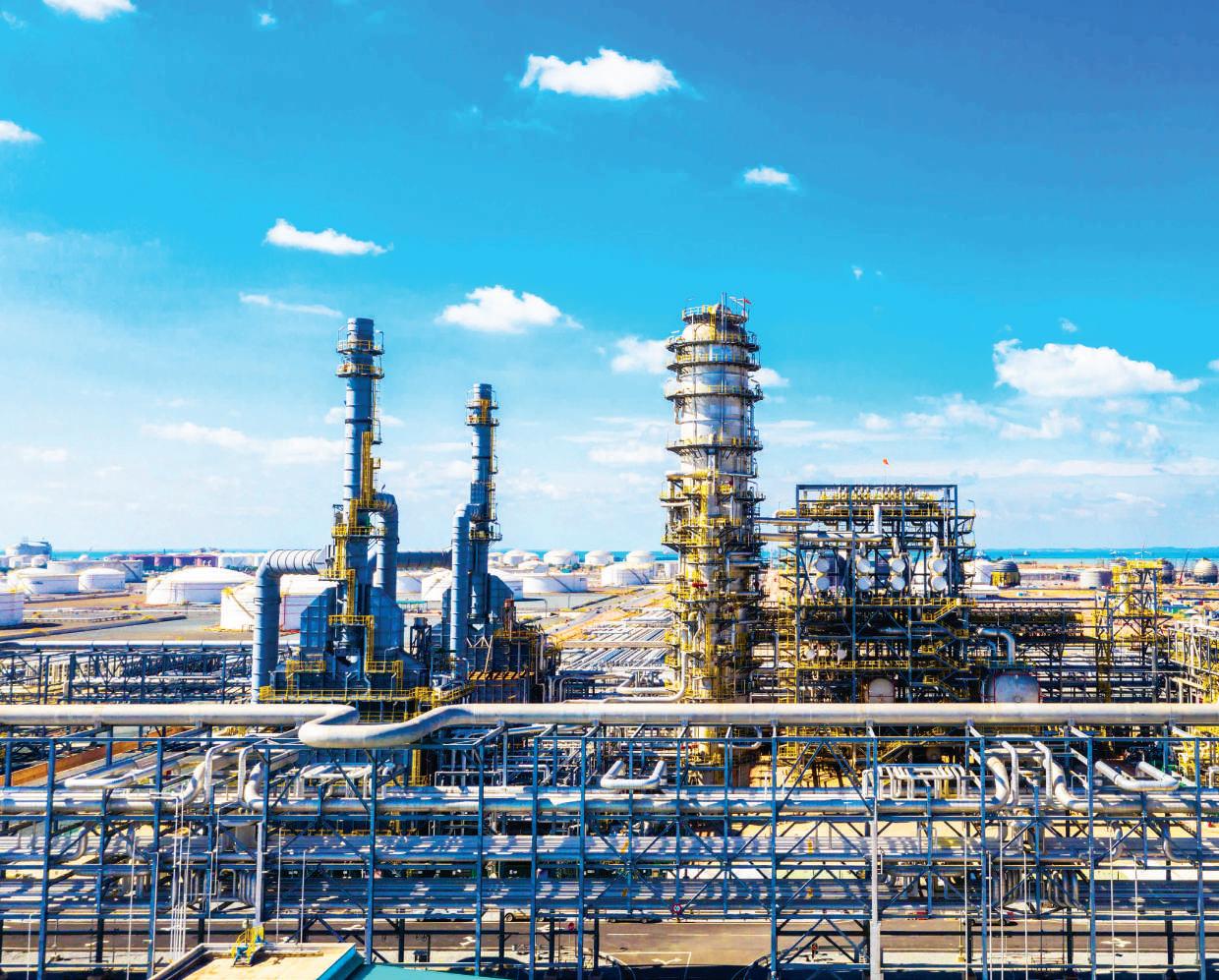
Ir. Dr Colin Wong Hee Huing, Senior Vice-President of PETRONAS and Chief Executive Officer of PETRONAS Refinery & Petrochemical Corporation (PRPC), says the Pengerang Integrated Complex (PIC) development in Johor is a bold vision to capitalise on petrochemical megatrends.
“Our location in the centre of the Asia Pacific places us in a prime position to benefit from the region’s rising customer sophistication and demand for higher-end consumer goods made from specialty and differentiated petrochemicals. At the same time, PIC will also meet the country’s requirements for cleaner
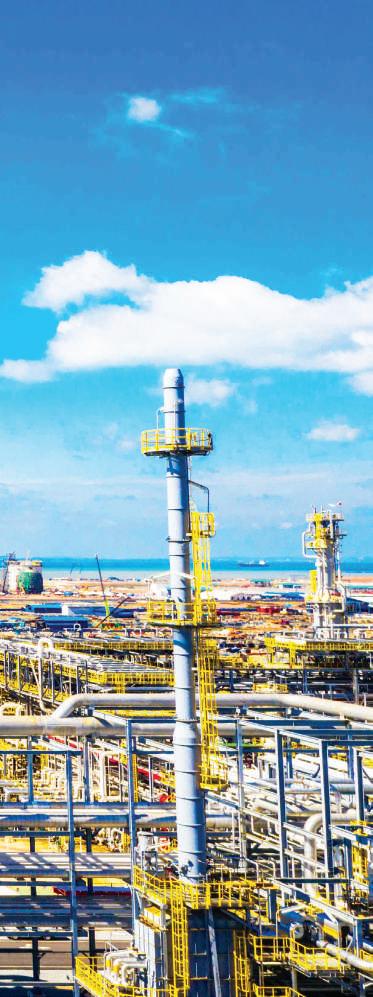
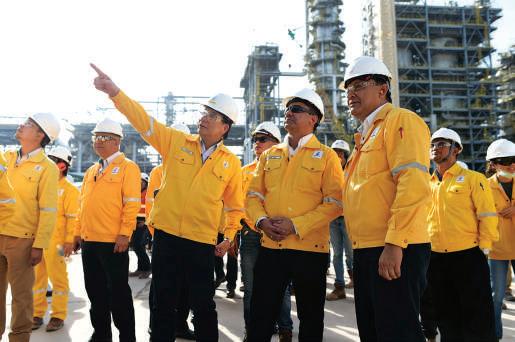
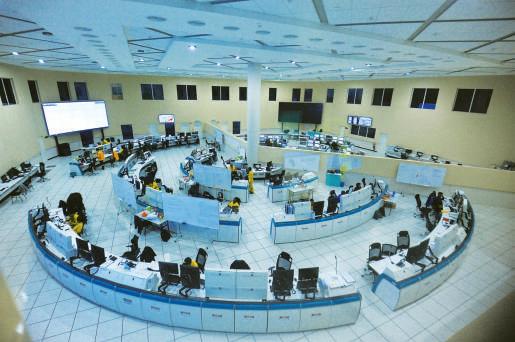
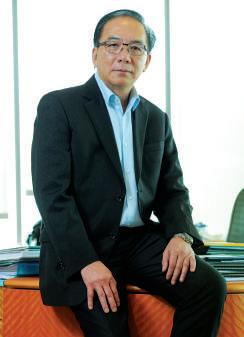
Ir. Dr Colin Wong Hee Huing holds a Bachelor of Engineering in Electrical Engineering from the University of Auckland and an Honorary Doctor of Science from Queen’s University Belfast. He is a member of The Institution of Engineers, Malaysia.
and more efficient next-generation fuels and petroleum products,” he tells JURUTERA Bulletin in an exclusive interview.
The US$27 billion world-class mega Complex was conceived as a strategic move to step out further along the downstream value chain. It is aligned with Petroliam Nasional Berhad’s (PETRONAS’) three-pronged growth strategy of maximising cash generators, expanding the core business and stepping out.
PIC is its largest integrated greenfield development, occupying 6,303 acres of land. “To put it in perspective, the PIC development is bigger than the combined areas of
PETRONAS hubs in Melaka, Kerteh and Gebeng,” notes Dr Wong.
It is an integral part of the larger Pengerang Integrated Petroleum Complex (PIPC) which is a national project of strategic importance. PIC plays a crucial role in establishing new engines of growth under the Economic Transformation Programme, creating a more dynamic oil and gas industry and an economic multiplier effect for Malaysia.
The project commenced after the Final Investment Decision (FID) in 2014, providing immediate benefits to the nation during its execution as approximately US$8 billion of total PIC CAPEX was spent on local content. It
He joined PETRONAS in 1980 and quickly rose through the ranks, serving in various capacities including as CEO of the PETRONAS Melaka Refinery Companies and Vice President of Technology & Engineering. Currently Senior Vice President & CEO of PETRONAS Refinery and Petrochemical Corporation Sdn. Bhd. (PRPC), a position he has held since 1 January 2015, he led the successful delivery of the US$27 billion Pengerang Integrated Complex development, one of the world’s biggest integrated oil, gas & petrochemical projects.
is a catalyst for future growth through value enhancement of products and by developing a pool of world-class talent.
With a capacity of 300,000 barrels of crude oil per day, the refinery produces a range of refined petroleum products, including gasoline and diesel that meet Euro 5 fuel specifications. It also provides feedstock for the integrated Petrochemical Complex, with nameplate capacity of over 3.3 mtpa.
While most petrochemical facilities in Malaysia depend on gas-based feedstocks, RAPID chose to use oilbased feedstocks in view of declining gas resources in the country. PIC will produce premium differentiated and specialty petrochemicals to cater to domestic and regional demand, besides strengthening PETRONAS’ position as the largest glycol and polypropylene producer, and second largest HDPE and isononanol producer in Southeast Asia.
In the current storm of the COVID-19 pandemic, coupled with depressed oil prices, PIC acted quickly while continuing to plan for the future. With oil, gas and petrochemical companies worldwide impacted by the drop in retail volumes, production cuts owing to low demand and soft petrochemical prices, the PETRONAS Group took decisive measures.
Production volumes and costs were optimised to manage the impact. A Corporate Command Centre for COVID-19 was established to consolidate response to the pandemic group-wide. In addition, a Liquidity-Plus Group was set up to look into the impact on financial and contractual matters, while a Fast Forward Group looks into postpandemic norms for business and recovery measures. With prolonged volatility expected, PETRONAS remains focused on strengthening its resilience while not losing sight of long-term plans to ensure future sustainability.
On the plus side, the crisis speeded up the adoption of digital technologies across the Group. Use of virtual collaboration tools enabled the workforce and their business partners to continue functioning remotely, at home and across the globe. PETRONAS has embraced the “new normal” and has seen great innovation and initiative as teams explore different and more efficient approaches.
PIC is an engineering feat and a Malaysian achievement of
unprecedented scale and complexity. It achieved many firsts – being the largest such facility to be built in the country and housing some of the most advanced technologies ever seen on our shores.
PIC has achieved 15 Malaysia Book of Records certifications, including the tallest and heaviest process column, biggest crude and LNG storage tanks, most powerful compressor trains, largest integrated effluent treatment plant and largest automated polymer warehouse.
“One of our proudest achievements is the Guinness World Record for ‘the most zero lost time in man-hours – petroleum industry’. The project clocked up a remarkable 112,281,090 safe man-hours, no small feat given that PIC had a multinational workforce of over 60,000 from 58 countries during peak construction,” says Dr Wong.
Completing a development of such immense proportions in a span of five years is a feat, on top of which PIC was rated Top Quartile Megaproject Execution by Independent Project Analysis (IPA) in the completion benchmarking in 2019.
The achievement was duly recognised by the international capital project industry. The PIC team was invited to share its success story at the 2020 Industry Benchmarking Consortium (IBC) Conference in the US. Unfortunately, the event was cancelled because of the COVID-19 pandemic.
PETRONAS is committed to excellence in HSE (Health, Safety & Environment) Management. PIC ensures that all activities are carried out responsibly within its HSE & Process Safety Framework to safeguard staff and assets, as well as the surrounding communities and the environment.
During the project execution, HSE Best Practices were rigorously implemented. These included strong HSE leadership with high visibility by the management teams which conducted regular walkabouts and
held daily safety toolbox talks. There was continuous communication and training on safety, including mandatory HSE induction courses and a Site Training School which reinforced safe practices. Compliance was enforced without compromise and consequence management implemented strictly for life critical activities.
As the Complex rolls over to operations, 3 main focus areas have been identified: Design & Process Safety, People Development & Competency Assurance and Pervasive Safety Culture.
Design & Process Safety: The latest safety systems have been incorporated across the facilities, with digitalisation significantly enhancing safety levels. Plant employees are equipped with RFID Tags with location tracking and Panic Button capabilities. Pervasive wireless enables real-time access with explosion-proof mobile capability.
Powerful digitalised safety systems provide high visibility of Simultaneous Operations (SIMOPS) and dynamic barrier management visualisation to prevent conflicts and to reduce equipment risks. The plant ecosystem is integrated with SAP, Engineering Management and other systems to facilitate effective control of process safety through advanced risk analytics. All these enhance engineering and asset integrity and minimise safety incidents and equipment failure.
Risk reviews and evaluations are carried out in an integrated manner, taking into consideration the impact on the integrated facilities rather than on individual process units. Process safety information is collated, maintained and updated constantly. An integrated assurance programme of multi-tiered audits is carried out regularly, covering processes and assets comprehensively.
In managing multiple hazards from fire, toxic gases, chemicals, etc. in one single integrated complex, advanced systems are installed to prevent and contain incidents. They include remote fire detection monitors
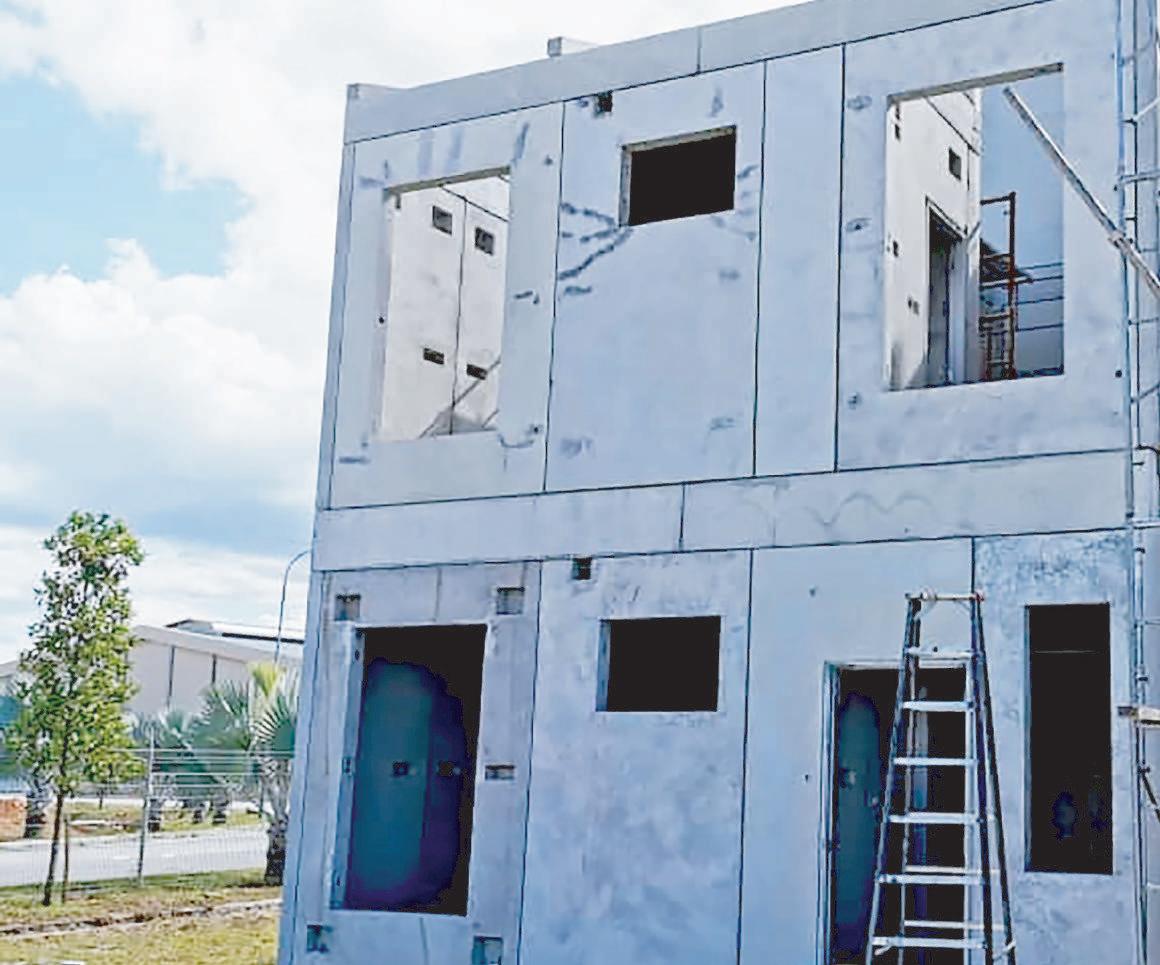
which can be controlled without people deployment, flame detectors and IR toxic gas detectors.
Its Fire Fighting Services, Central Emergency & Fire Services (CEFS) and Central Medical Facility have fully trained staff and are equipped with the latest technology for emergency response and crisis management. This includes technology for environmental monitoring and dispersion system simulation in the event of chemical incidents.
People Development & Competency Assurance: Staff are equipped with the required skills and competencies for effective job delivery. Operations staff undergo comprehensive training programmes, gain exposure from placements in other PETRONAS facilities with similar technologies and receive on-thejob training at various plants outside PETRONAS, both in Malaysia and abroad.
Pervasive Safety Culture:
Overarching all these initiatives is a Pervasive Safety Culture. PETRONAS leverages on a strong system of PETRONAS Cultural Beliefs to inculcate desirable values. Safety compliance is given due recognition and lessons learned are shared regularly. This has been highly effective in promoting strong ownership of safety procedures.
To drive home the criticality of HSE compliance, PETRONAS Zero Tolerance Rules (ZeTo) and a set of 8 Golden Rules of Process Safety are strictly applied. Briefings are held daily to reinforce safety messages. Established systems and procedures are in place to manage unsafe behaviours, with consequence management being applied for non-compliance. Through these efforts, PIC maintains a high standard of safety, which is a key element in the drive for operational and service excellence.
Asked about a fire incident at PIC in March this year, Dr Wong says: “There are inherent risks in oil & gas operations and these are compounded by the extremely complex and integrated nature of PIC. We acknowledge that the incident
happened despite our best efforts. We have learnt valuable lessons from it and have worked strenuously to close the gaps.
“Currently, comprehensive assessment is being undertaken on design and engineering integrity and operational readiness, to provide absolute assurance on safety before the plants are re-started. We have emerged stronger from the experience and are fully committed to the highest levels of vigilance and safety, which have always been and remain our utmost priority.”
Digital technologies are a gamechanger for PIC. Digitalisation was embedded in the overall plant design and construction of the Complex to integrate Operational Technology and Information Technology. The digital plants are connected to a larger digital ecosystem to enable agile operations, with the capability to make informed decisions and to rapidly adapt to changes in operational and market conditions.
PIC gained international recognition as a leader in digital transformation in October last year when it clinched the prestigious Asian Downstream Summit Award 2019 in the category of Best Digital Transformation Program, outdoing global oil majors like Shell Refining, Saudi Aramco and IRPC.
“We began our transformation journey by establishing the right digital foundations. Robust digital infrastructure incorporated into the PIC design includes a sophisticated system of ‘digital highways’ that span the entire PIC Complex, linked by a 500km fibre optic backbone,” explains Dr Wong.
Plant assets are digitalised using collaborative 3D plant design programs and other cutting-edge software to produce the required drawings and data. In addition, sensors and measuring devices at the plants capture in real time all essential data pertaining to Plants, People & Operating Environment.

Complex-wide pervasive Wifi enables the use of mobile devices to enhance and optimise plant operations, while advanced hardware and innovative software applications empower staff to retrieve real-time data for seamless work execution. To safeguard this digital environment, a cybersecurity program protects against security threats.
“Digitalisation provides full visibility and transparency of plant operations, eliminates human error, increases efficiency, enables fast data-driven decision making, fosters cross-functional collaboration and empowers users to constantly anticipate opportunities and manage risks with business value in mind,” says Dr Wong.
PIC is equipped with an extensive range of integrated digital and automated engineering solutions that
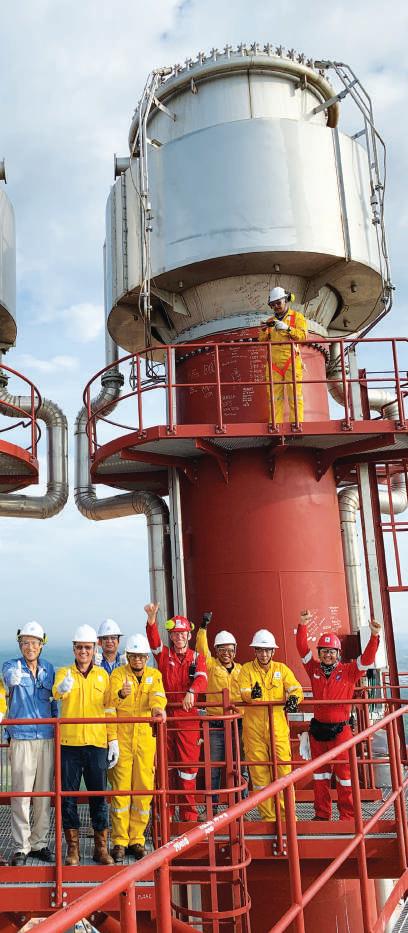
enhance operations. Some examples:
• Connectivity Infrastructure. Using a mix of Wifi and LTE technology, PIC boasts of having one of the widest wireless network coverage in the world within a manufacturing zone. This extensive infrastructure supports digital solutions that enable plant operators to work with speed and mobility on a multitude of tasks, from enhancing security with geo-fencing to managing an evacuation safely.
• Barrier Management & Work Control. This “Safe System of Work” module incorporates analytics elements and integrates the plant ecosystem to enable bidirectional data sharing with SAP, Engineering Management and other systems. Productivity is boosted by the fully integrated workflow, enabling fast review and approvals for functions
like Job Hazard Analysis and e-Permit-to-Work.
• Work Management System. An integrated, single-platform approach to plant operations management, the Work Management System (WMS) comprises 43 interfaces from 17 different sources involving more than 180 data field points, for full visibility of plant operational data. Vital data is displayed on a single dashboard view so the ‘health’ of the plant can be determined at a glance. The system’s wide-ranging applications, from planning, scheduling and production to sales and distribution, facilitate proactive, outcome-driven monitoring of plant KPIs.
• Turnaround Management. Digital Turnaround integrates people and systems into one platform, leading to greater visibility and accuracy of collaboration, enhanced HSE compliance levels and maximised cost savings.
• Automated Warehousing. The state-of-the-art Polymer Product Warehouse features cutting-edge Automated Storage and Retrieval System (ASRS) technology. It is the first fully automated racksupported ‘high bay’ warehouse for the petrochemical industry in South East Asia and the largest and tallest in Malaysia. It has 84,672 pallet addresses and uses robotic stacker cranes to store up to 1.65 million tons or a 21-day inventory of polymer products. The ASRS technology seamlessly connects production with storage and distribution. It provides excellence in safety, operating efficiency and reliability, minimising human error in storage and shipment.
• Asset Performance Management. This system automates asset strategy, asset analysis and strategy implementation, and incorporates a predictive analytics module for early detection of equipment failure.
“We have incorporated some inhouse innovations into our plants
to enhance asset integrity, process efficiency and safety. These are home-grown engineering solutions developed by PETRONAS teams and tailored to our specific needs,” says Dr Wong.
For example, a suite of PETRONAS asset management solutions includes Corrosion Management Plan (CMP), Thickness Measurement Location (TML) with baseline readings taken during project construction, PETRONAS Instrumented Protective Function (P-IPF), PETRONAS Risk Based Inspection (P-RBI), Electrical Safety and Operability Review (P-ELSOR) and Reliability Centred Maintenance (RCM).
These applications are critical tools used to achieve self-governance in occupational safety. PIC worked in collaboration with DOSH to establish the Pengerang Integrated Complex Occupational Safety & Health Administration Transformation (PICOAT) Self-Regulatory System, where responsibility for regulatory processes is transferred from DOSH to the plant operators. Being able to selfregulate in this manner allows PIC to optimise operation run-length through self-managed, planned shutdowns and maintenance schedules.
In the area of process safety, a number of solutions are applied, ranging from Hazop Leadership and Structured What If Technique (SWIFT) for risk analysis to Control of Industrial Major Accident Hazard (CIMAH) and Integrated Quantitative Risk Assessment (QRA).
Enhancing process efficiency is the PETRONAS Advanced Mass Transfer technology comprising ADV-P Trays and Downcomer Distributor (DD), which provide higher contact capacity and efficiency. This has been deployed in 34 different Refinery columns, resulting in optimal use of operating energy.
“PETRONAS continually taps the creative energies and talent of our people, not just to optimise current operations but also to nurture innovation and adaptability, essential
qualities for future-proofing the organisation,” says Dr Wong.
PIC is bullish about the future of petrochemicals despite pressure from activist groups advocating reduced plastics use. “The fact is that plastics are an essential part of everyday life and they are a component of a wide range of consumer products, from automotive parts to medical equipment. For instance, in the current COVID-19 pandemic, the petrochemicals industry is providing critical personal protective equipment like disposable gowns, gloves, masks and face shields,” says Dr Wong.
“The main issue against plastics is environmental pollution caused by mismanagement of plastics disposal and the petrochemicals industry has responded quickly to address this. Globally, there are many ongoing initiatives to bring together all stakeholders in the plastics value chain to address plastic pollution effectively.”
For example, the Allen MacArthur Foundation initiated the New Plastics Economy Global Commitment in 2018 to promote a circular economy for plastics. In Malaysia, the Ministry of Environment & Water is spearheading the Malaysia Plastic Pact which gathers stakeholders in supporting the circular economy initiative. PETRONAS, through its subsidiary PETRONAS Chemicals Group Berhad (PCG), plays an active role in this.
With PCG taking the lead, PETRONAS is working towards changing mindsets to see plastic as a resource rather than as waste. This is being done through education, application of advanced technologies and developing infrastructure for sustainable waste recovery systems.
PCG aims to recover 100 per cent of plastic waste equivalent to its production volume of polymers for the Malaysian market by 2030. It has initiated a feasibility study to develop a chemical recycling facility
to convert plastic waste into virginquality polymers and is also exploring collaboration opportunities for wasteto-energy solutions.
“At PETRONAS, we recognise that a sustainable business model is the way forward. At the same time, we also need to balance this with profitability. We hope to inspire change within the industry and drive sustainable practices,” says Dr Wong.
“PIC is guided by PETRONAS’ longterm sustainable view of business. Meeting the triple bottom line of Profit, People and Planet is at the core of our strategy. We are committed to exercising operational discipline and capabilities and harnessing technological innovations to ensure a sustainable and better energy future for generations to come,” says Dr Wong.
Growth strategies are shaped by PETRONAS’ Sustainability Agenda, with sharp focus on the Group’s aim to attain Net Zero Carbon Emissions by 2050. Four elements are embedded in PIC’s sustainability roadmap –Safeguarding the Environment, Responsible Governance, Positive Social Impact and Continued Value Creation.
To safeguard the environment, green technologies are employed wherever possible. A sustainable water management system adopts a 3Rs (Reduce, Reuse, Recycle) philosophy to optimise water usage and minimise wastage. PIC’s raw water supply facility, PAMER, periodically diverts water from its Seluyut Dam to help mitigate water shortages in the state of Johor. The Raw Water Treatment Plant at site innovatively recycles storm water to provide secure and sustainable supply.
Waste heat recycling systems are built into many of its facilities. The gaspowered Pengerang Cogeneration Plant harnesses exhaust waste heat to generate an average of 1,800 tph of steam to run the steam turbines and for process heating purposes. CO
boilers in the RFCC also recycle waste heat to generate steam for process use.
The Steam Cracker Unit, featuring 6 massive fired heaters with about 94% energy efficiency, uses waste heat for process heating and steam generation. Its record-breaking 92MW Enhanced Binary Refrigerant (EBR) system provides chilling in the cryogenic sections to -137oC, at over 85% efficiency. All these effectively reduce its carbon footprint, adding up to avoidance of 3.6 million tonnes of CO2 emissions annually.
PIC practises responsible governance by ensuring emissions and effluents from the plants adhere to Malaysian and international emission standards like the IFC EHS Guidelines, whichever is more stringent. Industrial effluents are treated at a centralised Effluent Treatment Plant before being discharged safely into the environment, and the Complex is working on recycling effluents to achieve Zero Water Discharge.
PIC is also creating a positive social impact, with many SMEs benefitting from the multiplier effect that has rippled out from the development. A multifaceted #ForPengerang initiative, which kicked off in 2015, has nurtured profitable cooperatives in Pengerang and implemented livelihood restoration programmes to augment income levels of locals, such as a mussel breeding scheme to boost marine harvests.
Moving forward, continued value creation is integral to its growth strategy. Plans are shaping up for several green energy and sustainability initiatives, including up to 400 MWp of solar energy capacities as well as other biofuel projects.
As the PIC teams now gear up to deliver in all areas of Park Management with operational and service excellence, sustainable development remains a priority, strongly grounded in the Group’s purpose to be a progressive energy and solutions partner enriching lives for a sustainable future.
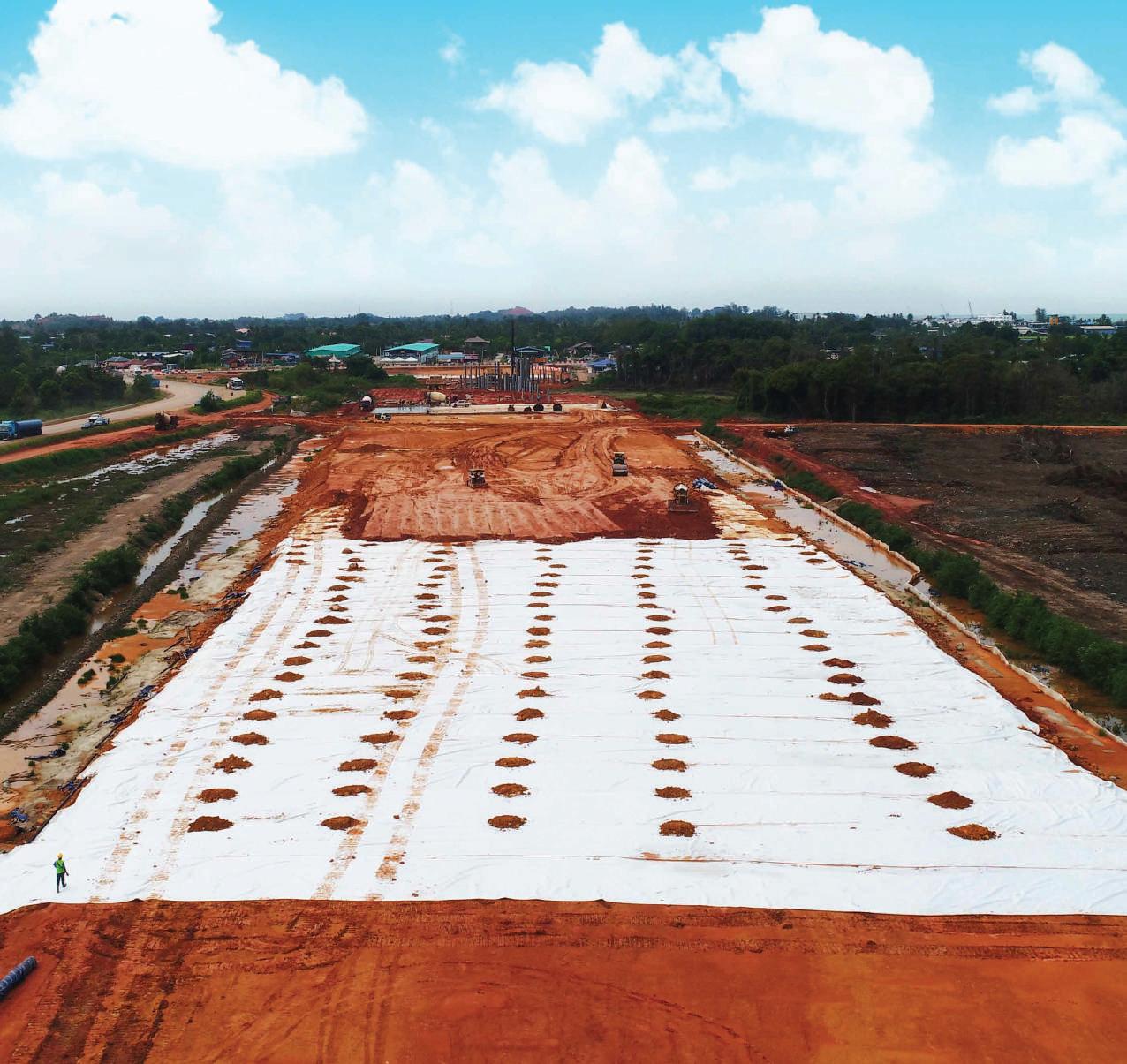

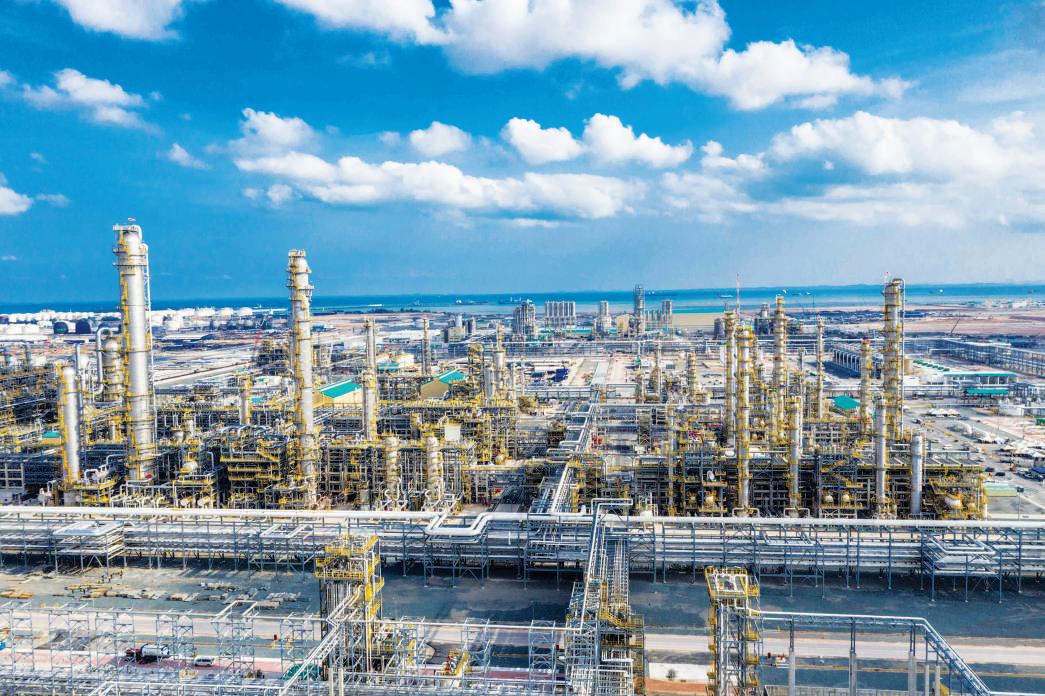
PETRONAS’ largest downstream investment, the US$27 billion Pengerang Integrated Complex (PIC), sprawls over a 6,303 acre site in Pengerang, Johor. It is part of the Pengerang Integrated Petroleum Complex (PIPC), a government initiative under the Economic Transformation Programme to establish new engines of growth for Malaysia. The mega project was completed in just 5 years, from the Final Investment Decision (FID) in 2014 to start up in 2019. It was an exceptional engineering feat indeed in project delivery.
The dimensions of the PIC are staggering, even to seasoned engineers. For example, the two modularised furnaces for the Crude Distillation Unit (CDU) weighed
about 1,000 tonnes each and were certified by the Malaysia Book of Records as the country’s largest crude heaters.
Beside them stands Malaysia’s biggest CDU column, at 300,000 bpd capacity, almost 10m wide, 66m high and 1,300 tonnes in weight.
Then there is the mammoth Steam Cracker Complex (SCC), which sits on an area the size of 71 football fields. The cracking heater, with six 180 MW furnaces, is the largest in the country. The Charged Gas and Enhanced Binary Refrigerant compressors top out at 73MW and 92MW respectively, with the latter also being the largest in Malaysia. The SCC’s propylene fractionator is certified as the country’s tallest and heaviest process column at 121.3m high and 1,808.6 tonnes in weight.
At the heart of PIC is the Refinery & Petrochemical Integrated Development, commonly known as RAPID, which processes crude oil to produce refined petroleum and petrochemical products. RAPID is owned by Pengerang Refining and Petrochemical (PRefChem), a joint venture between Petroliam Nasional Berhad (PETRONAS) and Saudi Aramco.
The refinery, a sour full conversion facility with a processing capacity of 300,000 bpd, has capabilities to process a wide range of crude blends to produce fuels like low sulphur diesel, jet fuel and motor gasoline. It also serves as the primary feedstock supplier to the SCC and Petrochemical Complex.
The SCC consists of pyrolysis cracking and recovery facilities. It has a combined annual production capacity of more than 3 million tonnes of Ethylene, Propylene, C4 Olefin and other products. These are further upgraded by the Petrochemical plants to produce differentiated polymers, glycols and other specialty chemicals that are used in the manufacture of a variety of high-demand, high-end consumer products.

of heavy machinery simultaneously.
Supporting the Refinery, Steam Cracker and the Petrochemical plants are several associated facilities that ensure the Complex’s operational self-sufficiency and reliability. This includes an LNG regasification terminal, a cogeneration power plant, an air separation unit, common utilities and offsite facilities, water supply facilities, solid product handling facilities and jetty, and a liquid bulk terminal with storage facilities for crude, petroleum products and petrochemicals.
The mega dimensions of the facilities, as well as their complexity and integrated nature, gave rise to countless challenges, which the resilient project teams overcame one by one. Engineering ingenuity was demanded of the teams at every project phase, from site preparation to commissioning and start up.
All in all, the task involved the laying of 28,000km of cables and pouring 1.8 million cubic metres of concrete. The structures totalled 180,000 tonnes of steel, enough to build 26 Eiffel Towers. In addition, over 12,000 systems were installed and tested across the entire complex and seamless tie-ins executed for 8,000 interface points and more than 120 integrated networks. A matrix of over 4,000km of pipelines had to be perfectly aligned and connected across different packages for the transport of water, oxygen, steam, hydrogen, crude oil, petroleum, petrochemical products and hazardous materials.
The installation of some extreme structures required meticulous planning and execution, using multiple units
Unconventional methods were also employed. For instance, the installation of the Polymer Product Warehouse rackings was done without scaffolding but instead, specialist workers dubbed “skywalkers” climbed to heights of 40m to do the challenging work.
So intriguing was the project execution of PIC that the story was captured by National Geographic in Megastructures, a documentary series featuring extraordinary construction projects around the world.
Ir. Dr Colin Wong Hee Huing, Senior Vice-President of PETRONAS and Chief Executive Officer of PETRONAS Refinery & Petrochemical Corporation (PRPC) who helms the PIC development, recalls that right from the start, the Project Management Team had mountains to conquer.
PIC was executed by more than 40 EPCC package contractors. RAPID alone consisted of 27 process units, with the majority vertically integrated and interdependent. All the packages had to be completed on schedule, as any delay in one would have a knock-on effect on the rest and so affect timely completion and start up of the whole Complex.
In 2015, less than one year into the project execution, challenges surfaced. Engineering of the Refinery & Cracker EPCC packages suffered slippages and infrastructure projects were also lagging.
“After careful assessment, the leadership took the bold step to revamp the Project Management model, from a conventional Owner-Contractor model to an Integrated Team model in which PETRONAS personnel would take the


1140945-A


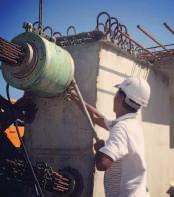
Nehemiah-OVM provides the following products and services:
- Post-tensioning solution provider
- Carpark Flat Slab
- Transfer Plate
- Beams, Box Girders
- Alternative design solutions
- Cable systems (stay cable, main cable, hanger)
- Bridge bearing and expansion joint
- Construction solutions (heavy lifting, ILM, etc)
- Monitoring, repairing and strengthening for structures


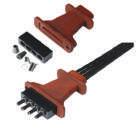
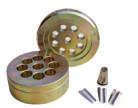
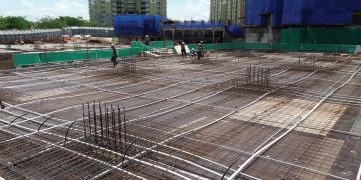
Head Office
Nehemiah Prestress Sdn Bhd 1140945-A No. 45-3, Jalan PJU 5/20
The Strand, Kota Damansara 47810 Petaling Jaya Selangor Darul Ehsan
Malaysia
Tel: (603) 6142 6638
Fax: (603) 6142 6693
Email: enquiry@nehemiahpt.com Certified by the European Organization for Technical Approval

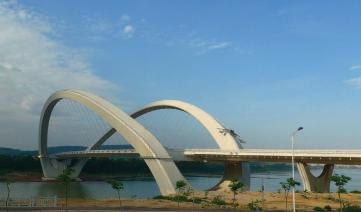
lead and be made accountable for project delivery,” says Ir. Dr Wong. “That radically changed the dynamics and resulted in faster decision making, eliminated redundancies, fostered strong ownership and speeded up project progress.”
In addition, a platform called the Chief Executive Council comprising CEOs of the main contractor companies was established and convened every 6 months. That and other platforms for engagement were instrumental in aligning PETRONAS and package contractors to common goals and key targets at each project stage. To reinforce the collaborative approach, PETRONAS Cultural Beliefs were leveraged as a tool to inculcate accountability and instill strong commitment from all teams towards timely delivery of key results.
These decisive moves proved to be the turning point. Slippages began to close up steadily on all fronts and the packages powered back to meet key target dates. Through a herculean effort by the project teams, the CDU was fired up in January 2019, marking the commencement of RAPID Start Up. By the end of 2019, all main facilities had started up.
The mega Complex is set to become a bustling regional hub. Besides meeting Malaysia’s requirements for cleaner and more efficient nextgeneration fuels and petroleum products, PIC’s strategic location in the centre of the Asia Pacific places it in a prime position to capitalise on the region’s strong demand for higher-end products made from specialty petrochemicals.
The Complex is now preparing to go full swing into operations and the current focus is on the push for growth. As Park Operator, PRPC is actively exploring opportunities for more value-added specialty products while staying true to its sustainability thrust.
It offers compelling value proposition to potential investors, with its outstanding park ecosystem and synergies. Ideally located beside a major trading hub and along international shipping lanes, it has a secure, sheltered harbour, with 24m-deep waters that can accommodate Very Large Crude Carriers (VLCCs).
PRPC provides a reliable supply of key utilities available on plug-and-play basis and a comprehensive range of services to support plant operations. There is on-site feedstock, well-developed physical and digital infrastructure and large areas of choice land available. PIC also offers competitive tax incentives and ease of doing business, with readily available resources, information and services to support pre-feasibility studies.
Moving forward, there are already a number of projects in the pipeline. Recently, PETRONAS Chemicals Group Bhd (PCG) announced the FID for a butadiene derivative plant using feedstock from the Steam Cracker. Numerous other derivative and specialty chemical projects are being explored.
Plans are also shaping up for several green energy and sustainability initiatives. These include solar projects totaling 400MWp in capacity, biofuels, a Zero Discharge Technology project for effluent water recycling, and a Plastics to Energy project by PCG and partners.

With its impressive state-of-the-art facilities and solid competitive advantages, PIC is certainly a development to watch. The world-class, fully integrated petroleum and petrochemical complex will undoubtedly elevate PETRONAS’ standing as a leading industry player, and put Malaysia firmly on the oil, gas and petrochemical world map.

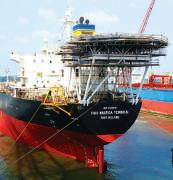
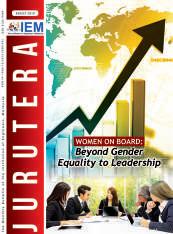












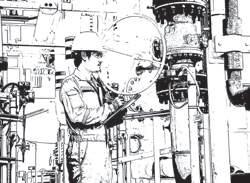
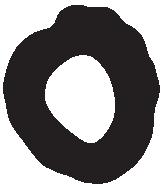







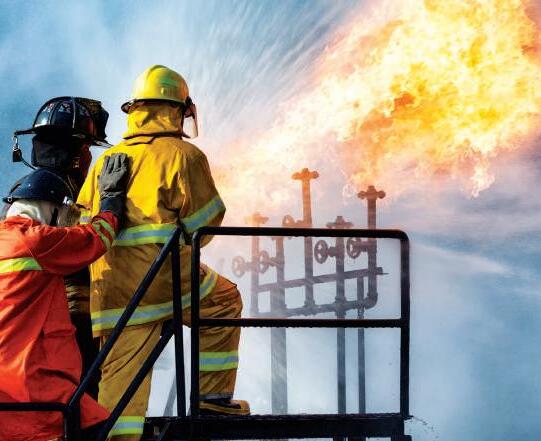








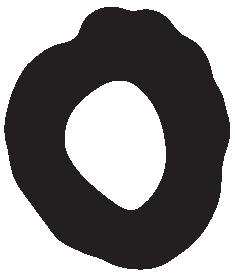






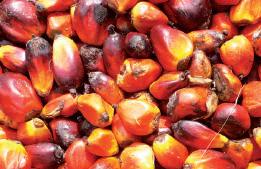
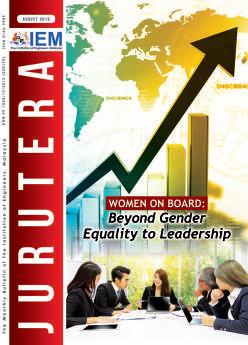
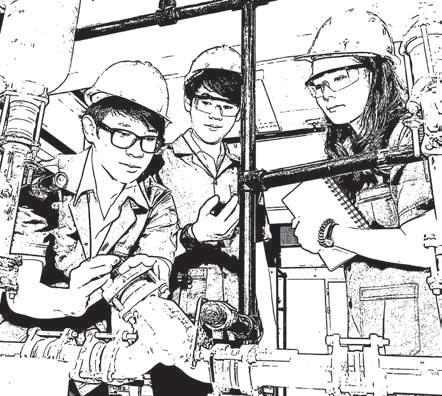












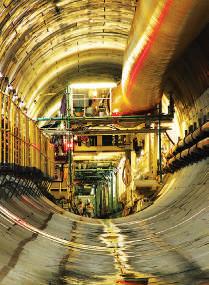

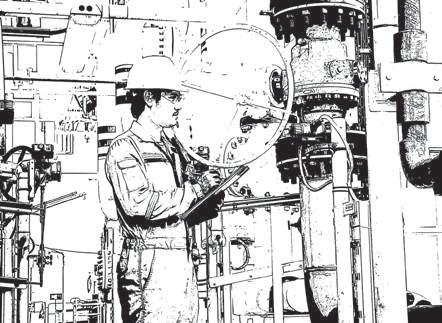











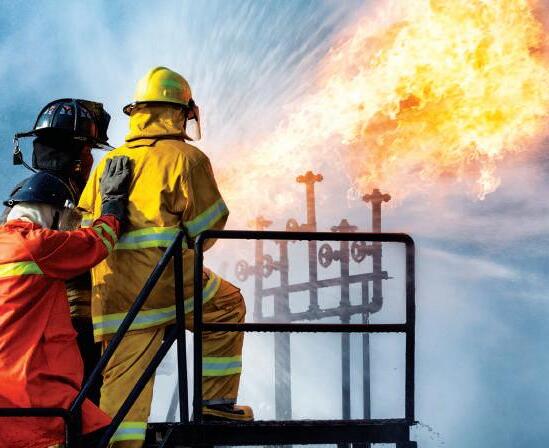



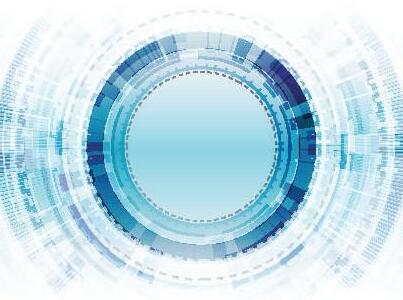

JURUTERA has an estimated readership of 200,000 professionals. Our esteemed readership consists of certified engineers, decision making corporate leaders, CEOs, government officials, project directors, entrepreneurs, project consultants, engineering consulting firms and companies involved with engineering products and services.




Our business partners can be assured that their products and services will be given the circulation and exposure they deserve, thus maintaining a sustained advertising presence to our core readers of decision-making engineers and technical experts. Our website offers an even wider market reach, with added international presence, aided by our international affiliation with official engineering bodies all over the world. Our online and offline advertising features such as banner advertising, article sponsorship and direct e-mail announcements have proven to be successful marketing strategies that will set the businesses of our partners apart from their competition.






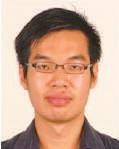
by Ir. Lee Chang Quan
Malaysia is blessed with oil and gas natural resources. The country’s first oil well was the Grand Old Lady in Miri, Sarawak, on Canada Hill in 1910.
But when talking about the oil and gas industry, we usually cite references to offshore platforms and petrol stations, with little if any mention of the petrochemicals sector and petrochemical products. But do you know that the petrochemicals sector is the 2nd largest contributor to Malaysia’s exports of manufactured goods (MITI, 2019)?
Petrochemicals are chemicals derived from petroleum and natural gas, which include aliphatic, aromatics, naphthenic organic chemicals or inorganic materials like ammonia (Britannica, 2020). Petrochemicals primarily comprise carbon and hydrogen, like oil and gas (interchangeable with ‘natural gas’ in this article in the context of oil and gas industry).
It is not the intention here to delve into chemical names such as Paraxylene, Benzene, Urea, Methanol, Butanol, etc., we will focus on the development and contribution of the petrochemicals industry as well as challenges/ opportunities for engineers to drive the industry further instead.
The development of the petrochemicals industry in Malaysia followed closely the oil and gas development plan in the early 1980s. Entrusted by the Federal Government under the Petroleum Development Act 1974 to manage Malaysia’s petroleum resources, PETRONAS set up a bold plan to add value to the oil and gas discovered offshore. Instead of processing mainly methane (or sales gas) from natural gas, the 2nd, 3rd and 4th gas processing plants in Kertih, Terengganu, were commissioned in early 1990s to deliver methane, ethane, propane and butane.
Thereafter, petrochemical plants (both domestic and foreign investments) started mushrooming up around Kertih Integrated Petrochemical Complex and Gebeng Integrated Petrochemical Complex. With gas as feedstock, petrochemical plants capable of producing ethylene, polyethylene, LDPE and MTBE started.
In Bintulu, Sarawak, the ASEAN Bintulu Fertiliser was established in 1985 as one of the largest granular urea
plants in Asia at that time, while Shell MDS pioneered the gas-to-liquids technology in 1993 to produce high quality waxes for multiple applications such as adhesives, PVC lubricants, inks, personal care and packaging materials.
With more natural gas discoveries, a new processing complex was added in Santong, Terengganu, in the late 1990s. Subsequently, more petrochemical plants were built in Kertih, Gebeng and Gurun (Kedah), especially with the completion of the Peninsular Gas Utilisation (PGU) I, II, III projects.
With the development of gas-producing fields offshore of Sabah, methanol-producing plants were built in Labuan. This was followed by the latest urea-producing plant in Sipitang as part of integrated gas development project in the state.
Other than gas-based value chain petrochemicals, an aromatics plant began operation next to PETRONAS Penapisan Terengganu Sdn. Bhd. in 1990s, taking naphtha as feedstock to produce paraxylene and benzene. Titan Chemicals (now Lotte Chemical Titan), which also used naphtha as feedstock, commenced operations in the same decade in Pasir Gudang, Johor, to produce olefins, HDPE, LDPE and aromatics. Other plants in Johor include Idemitsu (SM) (Malaysia) Sdn. Bhd., which produces styrene monomer, and Pengerang Integrated Petrochemical Complex, the latest petrochemical plant development project in the country.
Since 1980, Malaysia has recorded 400 projects with a total investment of RM207 billion related to petroleum products, including petrochemicals (MIDA, 2017). Major players in the petrochemicals industry (not in any order) include PETRONAS Chemicals Group Berhad, Lotte Chemical Titan (M) Sdn. Bhd., BASF, BP Acetyls Sdn. Bhd., Torray Group, Kaneka Group and Idemitsu (MIDA, 2017). These investments and operations have led to the rising trend in petrochemical exports. For the last 8 years, exports of petrochemicals have outpaced crude oil and LNG (Figure 1), almost doubling the amount registered in 2011. With the expected capacity to be added from Pengerang Integrated
Petrochemical Complex in 2020, these exports will surely rise further.
The petrochemicals industry is a high-entry-barrier industry which requires heavy initial investment. Nevertheless, the current oil and gas reserves have positioned Malaysia as an attractive petrochemicals hub in this region which can offer competitive pricing due to the long-term availability and reliability of natural gas and oil as feedstock. The Domestic Direct Investment (DDI) and Foreign Direct Investment (FDI) contributed by petroleum-related product projects from 2016 to 2019 was in the average of 42% and 14% of the country’s total DDI and FDI respectively. The Pengerang Integrated Petrochemical Complex development project alone contributed a big chunk of the investment value. The country will reap the investment outcome once the complex is commissioned fully in 2021, increasing the domestic supply, foreign exports and job opportunities.
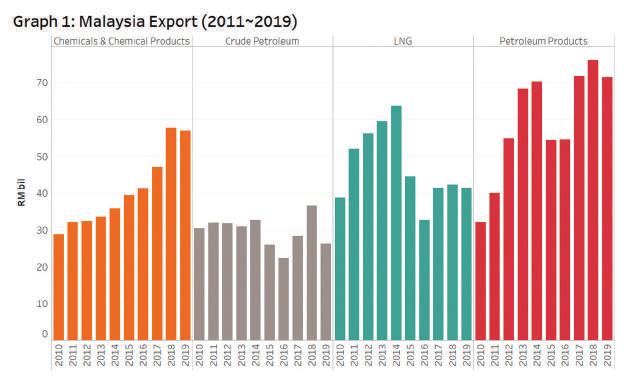
A glimpse into imports for the same period (Figure 2) offers another perspective: Imports of petrochemicals increase in tandem with exports. Despite that, the trade balance record thus far has been in favour of imports and Malaysia can exploit the imported products if we can strengthen the downstream value chain business by adding value to petrochemicals imports, encouraging SMEs to invest in chemicals production and re-exporting









or for local consumption. The economic value of the current value chain versus its full potential will require the expertise of economists as well as the technical know-how of engineers.
Looking south over the Straits of Johor can probably provide lessons on how to strategically add value to the imports and re-export (Figure 3). With no natural resources of its own, Singapore is dependent on imports. While Malaysia’s petrochemicals industry has the advantage of domestic oil and gas feedstock, how long can we maintain competitive pricings in the volatile commodity market?
We will have to weather another risk, given the multiple capacity addition by other countries/producers in the very near future. Apart from Singapore, investments in petrochemical projects (before the COVID-19 pandemic) are taking off in this region, e.g. Indonesia, Vietnam, India and China. Can we compete (or collaborate) to win bigger? This will be the puzzle that industry experts and business strategists need to solve. Regardless, engineers will have to shoulder the responsibility to improve current operations and assets to make petrochemicals facilities/ products safer as well as more reliable and more efficient.
There are three immediate areas where engineers can contribute.
While a typical plant is designed to operate for 20 years, the first generation of petrochemicals plants in the country have been in operations for more than 20 years; in fact, even the 2nd generation plants are almost 20 years old.
While some plants have undergone rejuvenation and refurbishment, it remains a challenge for engineers to keep plant equipment operating safely and reliably at all times. There is an urgent need for engineers to innovate and
improve maintenance services and technology. How can engineers ensure plants run efficiently? How will equipment maintenance services and engineering contractors keep up the pace and offer more effective solutions to plant operators? At the other end of the spectrum, in operating newly-built facilities, are local engineers capable of keeping abreast with the new equipment/technology installed? Are they able to make the necessary improvements on daily operations and maintenance without relying on foreign talent?
2. Application of advanced digital-enabling tools and data analytics
With fast evolving technology, engineers are on a continuous learning curve, especially in acquiring skills in data analytics and digital-enabling tools application. Application of digital enabling tools is essential to the petrochemicals industry in managing the operation hazards. Advanced data analytics skills will come in handy when engineers look for performance improvement insights. Unfortunately, these skills have not gained much traction in engineering courses.
Efficiency improvement can be achieved with data analytics skills to achieve a more data-driven operations and maintenance strategy. Reliability-centred-maintenance and risk-based-inspection were the two much-touted approaches in managing asset for the past three decades.
The implementation of these two strategies for example, can be exploited for more value by coupling data analytics to provide predictive or prescriptive foresight, only if they are integrated with operational database. Major players in other parts of the world have invested heavily in integrated digital solutions that provide advance analytics to improve the daily operations and maintenance, thus reducing overall operations cost
3. Environmental management, product stewardship and circular economy
Though the end application is generally useful to society, the processing of petrochemicals involves hazardous and sometimes toxic materials. Managing the in-process handling and waste is thus critical to minimise harm to people and the environment. Engineers must put more thought into the early design stage on the full cradleto-grave life-cycle management or the waste will end up in the wrong places, leading to untoward incidents.
Supporting engineering services providers – such as waste management, environmental engineering consultant and chemical handling companies – should step up the game in understanding the different hazards and to advise the necessary precautionary measures right at the beginning, especially leveraging on hazards management lessons learnt from other countries.
Cradle-to-grave life-cycle management may not be adequate in the near future (or even now) as there are increasing environmental issues “contributed” by petrochemicals products already ending up in the wrong sites (river, sea and marine animals). Therefore, the industry should take a bolder step to embrace circular economy concepts, reduce waste and increase any opportunity to recycle, reuse and re-manufacture. Again, engineers can be the leading contributor towards making this circular economy work at scale with close industry-university collaboration.
Looking back, it has taken us close to 4 decades to develop the petrochemicals industry in Malaysia to where it now contributes more than RM100 billion in exports (2019). For this achievement, engineers and supporting peripheral services have no doubt played key roles in the past and present. Facing the VUCA world economy, engineers should constantly step up and bring innovative ideas to the industry to make Malaysia remain competitive in the petrochemicals market or risk losing to players in the region.
[1] Department of Statistics, Singapore. (2020). Domestic Exports. Available from https://www.singstat.gov.sg/find-data/search-bytheme/trade-and-investment/merchandise-trade/latest-data
[2] Encyclopedia Britannica, 2020. Encyclopedia Britannica, Inc. Available from https://www.britannica.com/science/petrochemical
[3] Malaysia Investment Development Authority (MIDA). (2017). Malaysia Investment Performance Report 2017. Available from https://www.mida.gov.my/home/download-centre-2018/posts/
[4] Ministry of International Trade and Industry (MITI), Malaysia. (2019). Manufacturing Profile (Chemical & Petrochemical Industry). Available from https://www.miti.gov.my/miti/resources/1._Chemical_ and_Petrochemical_Industry_.pdf
Lee Chang Quan, Secretary/Treasurer of IEM Oil, Gas, Mining Technical Division, has worked in the oil and gas industry for 15 years. He has now expanded his interest to the economics of the industry.


Journal of The Institution of Engineers, Malaysia invites members/readers to submit technical papers
Your benefits
» Be part of 60 years old Journal
» Be part of the big team to push for Journal re-indexing
» New International Advisory Board
» New Journal Editorial Board
» A peer-reviewed Journal
» Be recognised as a researcher/professional
» Each paper published will be paid RM500, starting 2020

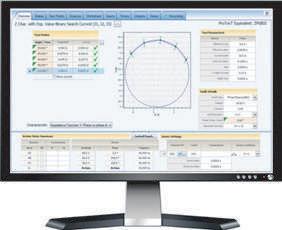



by Ir. Prof. Dr Dominic C. Y. Foo
The increase in demand for hydrogen in refineries and petrochemical plants is a challenge as these facilities need to minimise their hydrogen utility requirement without incurring high capital and operating costs. As environment-related fuel specifications become more stringent, the use of hydrogen increases in the various hydro-processes in the refineries, e.g. hydrotreating and hydrocracking where hydrogen gas is used to remove impurities such as sulphur and nitrogen from the crude oil stream. One of the widely accepted tools to optimise hydrogen usage is arguably process integration. This consists tools such as pinch analysis and can help to set performance targets for various recovery schemes.
METHODOLOGY
Process integration may be defined as “a holistic approach
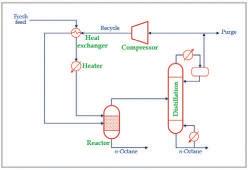
to design and operation which emphasises the unity of the process (El-Halwagi and Foo, 2014). The technique was initiated in the late 1970s during the first oil crisis to address systematic design of heat recovery system in the process plants. It was later extended to optimise energy use for various energy-intensive processes, e.g. reactors and separators (Smith, 2016).
In the 1990s, process integration was extended to material resource conservation, with special cases reported for water minimisation and hydrogen recovery (Foo, 2006, 2012). To date, most applications for hydrogen recovery have been reported in China, thanks to the commitment of the Chinese government to making better air quality in big cities.
The road map to carry out pinch analysis is shown in Figure 1.
Data to carry out the analysis is first extracted from a process flow diagram (PFD). T his is then followed by the two-step pinch analysis technique :
•
Process flow diagram (PFD) Stage 1: Targe ng tools such as material recovery pinch diagram (MRPD) may be used to set performanc e targets for a hydrogen network , i.e. minimum fresh hydrogen a nd minimum purge flowrates.
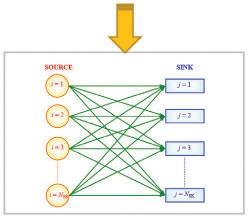
Data extrac on
• Stage 2: Hydrogen network is designed following some systema c procedure, e.g. nearest neighbour algorithm (Foo, 2012).
Pinch analysis

Targe ng
1:
Network design
For the given flowrates and impurity concentra ons of the make -up and recycle streams, the flowrate and impurity concen tra on of the hydrogen sink may be determined using Equa ons 1 and 2 respec vely. (1)
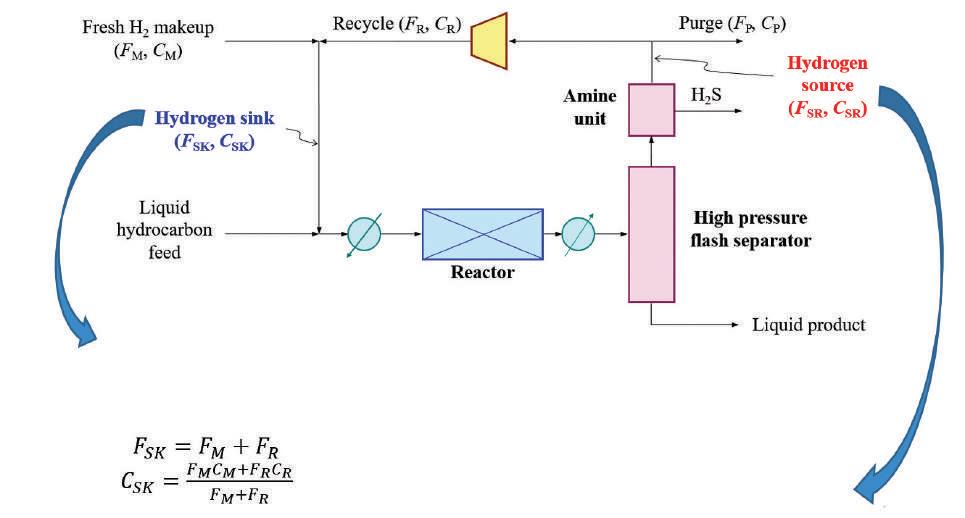
The flowrate of hydrogen source is given by the summa on of recycle and purge stream flowrates (Equa o n 3), while the impurity concentra on of these streams are essen ally the same (Equa on 4). (3) (4)

Figure 2 shows a simplified PFD for a hydrogen-consuming unit (Foo, 2012). Liquid hydrocarbon feed is mixed with hydrogen-rich gas stream and then heated and sent to the hydrotreating/hydrocracking reactor. In the reactor, some hydrogen is consumed while other light hydrocarbon (e.g. methane, ethane) and gaseous components (e.g. H2S, NH3) are formed. The reactor effluent is cooled and sent to a high pressure flash separator.
The bottom liquid product of the separator is normally sent to a low pressure separator for further purification. The top stream from the flash separator contains a significant amount of hydrogen which is always sent for recycling.
Prior to recycling, the gas stream is treated with amine unit for H2S removal. A small portion of the treated gas stream is then purged (normally to fuel or flare systems) to prevent the build-up of contaminants while the remainder is re-compressed and recycled to the reactor, with some fresh hydrogen make-up.
To perform hydrogen recovery, the hydrogen sinks and sources are to be defined, so that data extraction may be carried out. Hydrogen sinks correspond to units which require hydrogen gases, e.g. hydrotreating and hydrocracking. On the other hand, hydrogen sources are streams which contain hydrogen gases which are to be recovered (Figure 2).
Figure 3(a) shows a refinery hydrogen network (Foo, 2006). At present, two hydrogen-consuming units, A and B are fed with a fresh hydrogen source and purge a significant amount of unused hydrogen as fuel. Note that both units have an existing internal hydrogen recycle stream. By performing hydrogen integration, fresh hydrogen flowrate can be further reduced. Data for its sinks and sources are extracted and shown in Table 1.
(a)
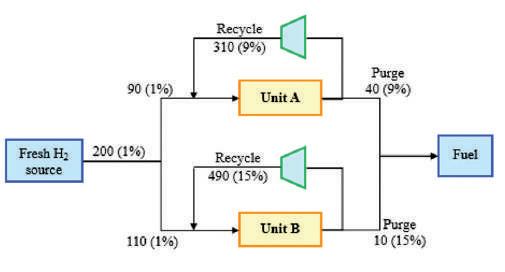
In Figure 3(b), the material recovery pinch diagram is used to determine the minimum fresh hydrogen needed for the network. This is termed as targeting in pinch analysis Figure 3(a): Hydrogen network
language. As shown, the fresh hydrogen (FH) is found as 183 MMscfd, while its purge stream flowrate (F P ) is reported as 33 MMscfd. A total of 817 MMscfd of hydrogen is being recovered (F REC).
(b)

In Figure 3(c), the hydrogen network is redesigned. Instead of purging its hydrogen source, Unit A sends its hydrogen to Unit B, which helps to reduce its fresh hydrogen intake. Results show that the fresh hydrogen and purge stream flowrates match the targeted values.
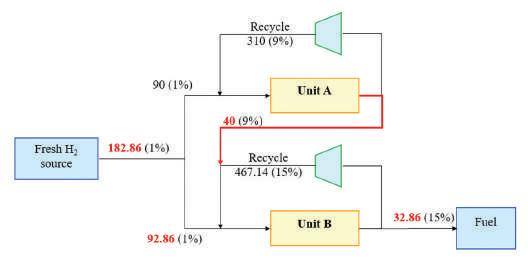
[1] El-Halwagi, M. M. and Foo, D. C. Y. (2014). Process Synthesis and Integration, in Seidel, A. and Bickford, M. (Ed.). Kirk-Othmer Encyclopedia of Chemical Technology, John Wiley & Sons.
[2] Foo, D. C. Y. (2006). Use Process Integration to Set Reuse and Recycling Targets. JURUTERA, 2006(4): 8-14 (April 2006).
[3] Foo, D. C. Y. (2012). Process Integration for Resource Conservation, CRC Press, Boca Raton, US.
[4] Hallale, N. and Liu, F. (2001). Refinery Hydrogen Management for Clean Fuels Production. Advances in Environmental Research, 6: 81-98.
[5] Smith, R. (2016). Chemical Process: Design and Integration, 2nd Ed. West Sussex, England: John Wiley.
Author’s Biodata
Professor of Process Design & Integration at University of Nottingham Malaysia, Ir. Dr Dominic Foo Chwan Yee is IEM representation and President for the Asia Pacific Confederation of Chemical Engineering (APCChE). He was chairman for the Chemical Engineering Technical Division (sessions 2012-2014).
Congratulations to Y.Bhg. Dato’ Ir. Dr Gue See Sew, the Chief Executive Officer of G&P Professionals Sdn. Bhd. and current Chair of the International Professional Engineers Agreement who was honoured as the International Medal Winner of the Institution of Civil Engineers (ICE) Awards 2020 on 5 October 2020.
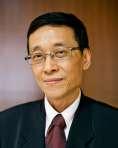
by Ir. Lai Sze Ching
Since the amendment in 2015 of the Registration of Engineers Act (REA) 1967, there have been some confusion over the rights of the respective registered persons under REA. This is more so for the rights of submission of plans and drawings of a Professional Engineer and a Professional Engineer with Practising Certificate.
Here, we will analyse and explaine the respective rights and duties of the registered persons under REA.
Section 7(2)(a) of REA provides that “…a Graduate Engineer who is registered with the Board may, subject to Section 8, take up employment which requires him to perform professional engineering services”.
Under Section 2 of REA, “professional engineering services” is defined as “…engineering services and advice in connection with any feasibility study, planning, survey, design, construction, commissioning, operation, maintenance and management of engineering works or projects and includes any other engineering services approved by the Board.”
Therefore a Graduate Engineer may be employed to perform professional engineering services, such as to carry out feasibility study, planning, survey, design, construction etc. However he is not allowed to submit any such plan and drawing to any person or authority as these rights are only available to the Professional Engineer with Practicing Certificate as stated in Section 8 of REA.
The relevant section in REA is Section 7(2)(aa) which provides that “...an Engineering Technologist who is registered with the Board may, subject to Section 8, take up employment which requires him to perform professional engineering services”.
Therefore, similar to a Graduate Engineer, an Engineering Technologist may be employed to perform professional engineering services, such as to carry out design and construction etc. In this respect, an Engineering Technologist’s rights are similar to that of a Graduate Engineer.
The rights of a Professional Engineer are provided under Section 7(1)(a) and Section 8A(1) of REA as follows:
“7. (1) No person shall, unless he is a Professional Engineer, (a) take up employment which requires him to carry out or perform professional engineering services.”
“8A. (1) A Professional Engineer may submit plans or drawings to any person or authority in Malaysia where such plans or drawings are in relation to an equipment, a plant or a specialised product invented or sold by him or his employer.”
Section 8A(2) further explains the meaning of the word “employer” in Section 8A(1) as follows:
“8A. (2) The employer referred to in subsection (1) shall not include a client.”
Therefore, in addition to being able to be employed to perform professional engineering services, a Professional Engineer is allowed to submit plans and drawings to any person or authority on the following engineering works: Equipment, plant or specialised product.
The right to submit the drawings is subject to a condition that the equipment, plant or specialised product must be invented and sold by him or his employer. For example,
a company specialising in the design and fabrication of hoist and crane may employ a Professional Engineer to design and thereafter, to submit the plans and drawings designed by him to his customer (e.g. contractor or owner of factories) or authority (e.g. factory and machinery department).
However he is not allowed to sign on the plans and drawings if the equipment, plant or product are designed by another person. This is because he is not involved in the design at all and should not endorse drawings designed by another engineer. By the same reasoning, a Professional Engineer is also not permitted to sign and endorse drawings of imported equipment such as pumps, motors and switchboards imported from other countries and sold by the local agents etc.
The type of plans and drawings which may be endorsed by a Professional Engineer may include:
1. Equipment such as pumps, motors, flow meters etc.
2. Plant such as sewage treatment plant, waste water treatment plant, water treatment plant, palm oil mill process plant, oil refinery etc.
3. Specialised products such as roof truss, hoist, cranes, valves, pipes, surge vessels, switchboards, display board etc.
Contrary to many misconceptions, a Professional Engineer is empowered under REA to submit plans and drawings for any equipment, plant or product designed by him and this includes complicated treatment plant and chemical process plant.
The rights of submission for a Professional Engineer with Practising Certificate (PEPC) are stipulated under Section 7(1A)(a) and 8(1) of REA. Section 7(1A)(a) provides as follows:
“7. (1A) A person shall not, unless he is a Professional Engineer with Practising Certificate, (a) practise, carry on business or take up employment which requires him to carry out or perform professional engineering services for designated engineering works subject to section 8.”
Therefore a PEPC is permitted to set up his own consulting company or be employed by others to perform professional engineering services.
His rights to submit plans and drawings are stipulated in Section 8(1):
“8. 1 Except as otherwise provided under any other written law, no person or body, other than a Professional Engineer with Practising Certificate who is residing and practising in
Malaysia or an engineering consultancy practice providing professional engineering services in Malaysia, shall be entitled to submit plans, engineering surveys, drawings, schemes, proposals, reports, designs or studies to any person or authority in Malaysia.”
The scope of rights of submissions in Section 8(1) was previously provided for the Professional Engineer before the amendment in 2015.
Under this Section, a PEPC is empowered to submit any plan and drawing to any person or authority. Unlike Section 8A, there is no restriction that this right be limited to any equipment, plant or specialised product invented and sold by him. The drawings that he may endorse include building and structural drawings, foundation drawings, passive and active fire systems, air-conditioning systems etc.
In this case, the PEPC is allowed to submit plans and drawings to developers, building owners, factory owners, local authorities such as Majlis Perbandaran Petaling Jaya, Indah Water Konsortium, SYABAS etc. The PEPC is also empowered to endorse all plans and drawings of the equipment, plant and specialised product as stated in Section 8A.
However the PEPC’s rights to submit plans and drawings are subject to certain limitations as provided under Section 8(2):
“(2) The right of a Professional Engineer with Practising Certificate or engineering consultancy practice to submit plans, engineering surveys, drawings, schemes, proposals, reports, designs or studies to any person or authority in Malaysia is subject to any condition or restriction imposed by the Board under section 7B, subsection 7A(3), or paragraph 4(1)(b) and is restricted to the right to submit such documents only in relation to the branch of engineering in which the Professional Engineer with Practising Certificate…”
Therefore, the PEPC is only permitted to submit plans and drawings in relation to the branch of engineering he/she is registered in with the Board of Engineers Malaysia. In short, a civil PEPC is prohibited to submit drawings for mechanical work, such as air-conditioning system and vice versa.
Disclaimer: This article represents the personal views of the writer and is for general information only and so, should not be relied upon as professional advice.

by Ir. Azizul Azuan bin Sahrum
Ateam from the Oil, Gas & Mining Technical Division (OGMTD) of IEM, led by its Chairman, Ir. Roznan bin Abdul Rashid, Ir. Razmahwata Mohd Razalli and Ir. Azizul Azuan Sahrum, visited the Pengerang Integrated Complex (PIC) recently.
The purpose of the visit was to interview Ir. Dr Colin Wong, Senior Vice President & CEO of PETRONAS Refinery & Petrochemical Corporation Sdn Bhd (PRPC) on the PIC mega-sized development and to gain an overview of the large number of vertically integrated plant facilities of recordbreaking proportions at PIC.
After the interview, the team went on a site tour which included a stopover at the “One Team One Goal” Visitor’s Centre for an interactive walk through a wide range of state-of-theart technologies installed in the integrated complex.
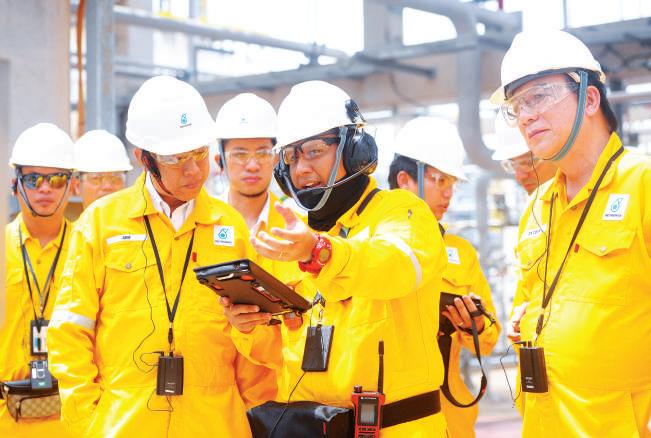
They were briefed on the progress status, future growth plans and challenges during project delivery which were skillfully handled by the resilient project management team. It was a feat to manage the unprecedented levels of manpower safely as, during peak construction, the multinational workforce numbered over 60,000. Robust systems were put in place to ensure smooth project execution.They include HSE best practices, emergency response readiness, meticulous quality management and control, asset integrity management and assurance, and a comprehensive start up readiness programme.
Talent development is one of the strengths of the organisation. PETRONAS places great emphasis on growing its staff members professionally to ensure their career progression. The PIC project provides vast opportunities for PETRONAS-wide and local talents and
to develop professionally, with minimal dependence on external foreign consultants. This can be seen throughout its construction and commissioning; today local employees continue to take the lead in operations.
PIC’s unique “Integrated Team” Project Management model, in which PETRONAS personnel took the leadership role in project delivery, had nurtured a competent corp of employees and managers who grew professionally through hands-on experience.
Many mid-level engineers assigned to the project had the opportunity to hone their technical competencies and upskill themselves. Through the project, more than 30 technical specialists were developed across a wide spectrum of engineering disciplines.
Preparation for manning the complex operations began early, with a recruitment drive in 2012 for an Operation Readiness Technical Capability (ORTC) programme. About 1,000 trainees were successfully developed and, with the intention to nurture local talent in the state, priority was given to Johoreans.
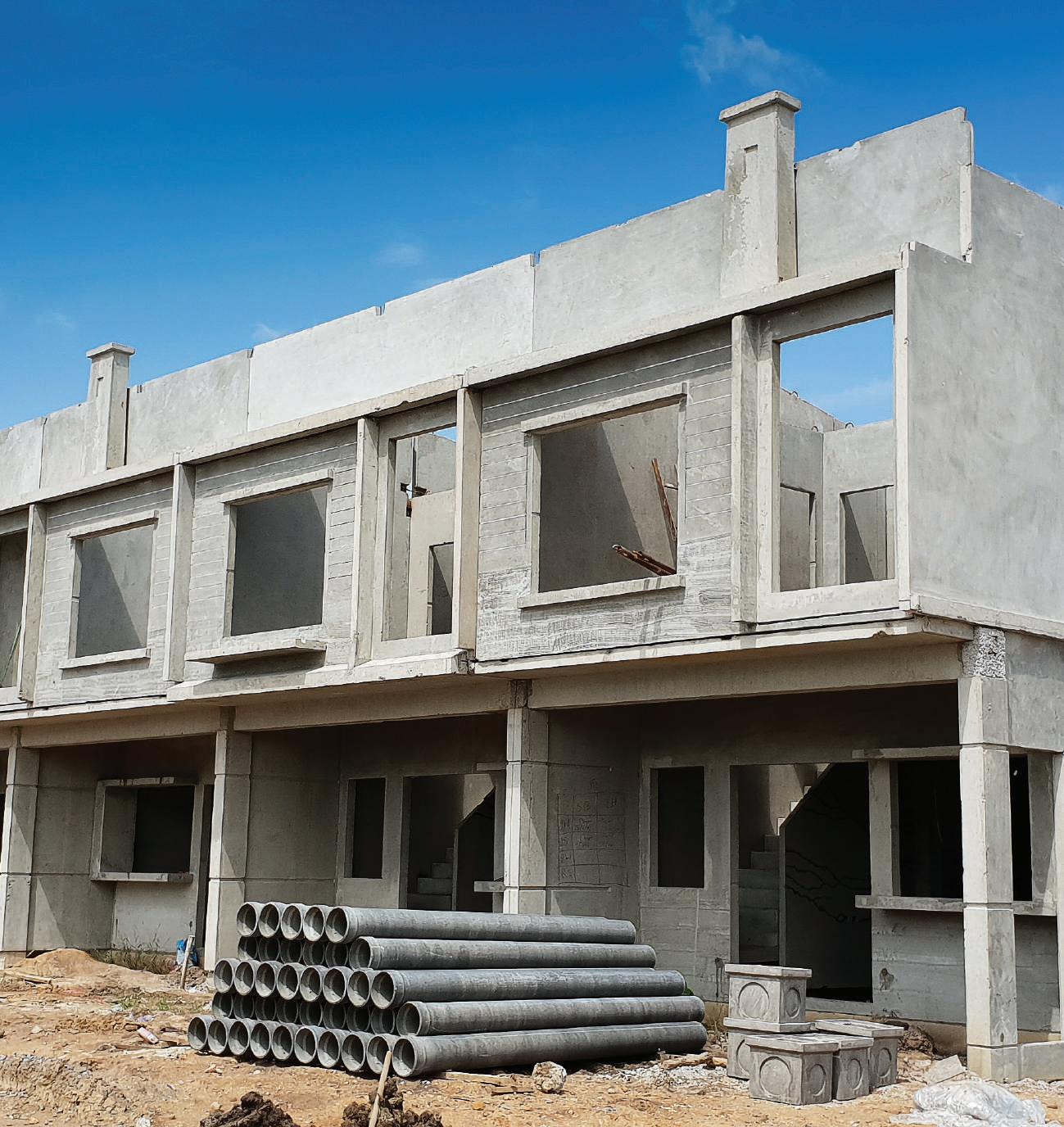

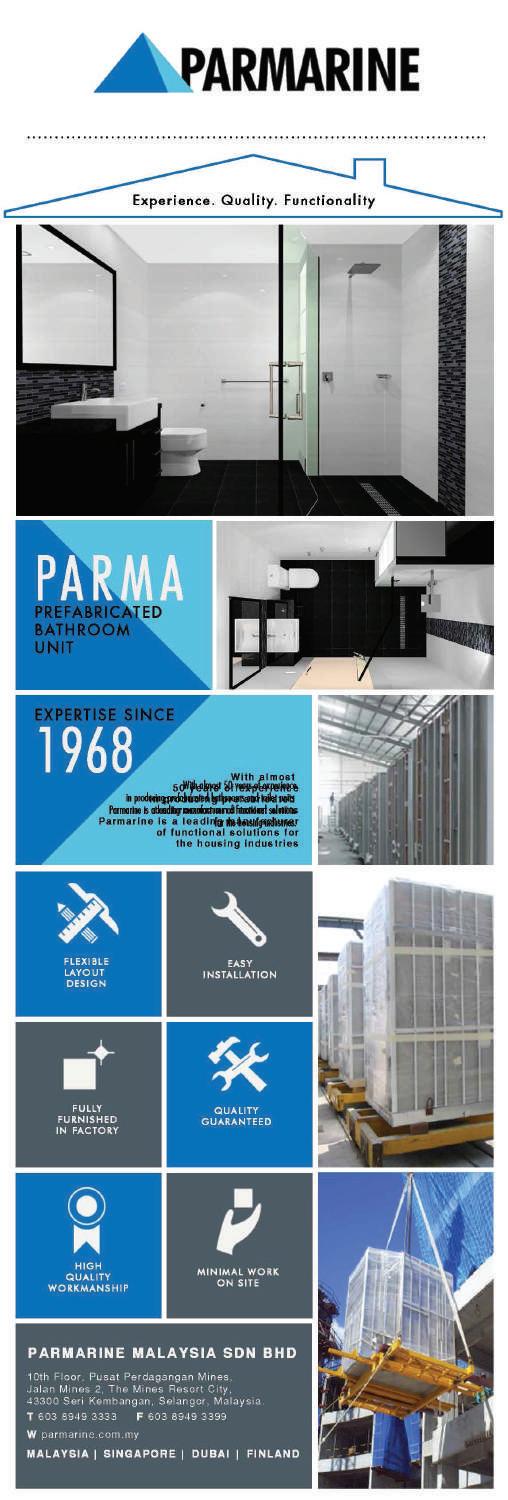
The trainees were given training and exposure at various PETRONAS operating units (OPUs) with relevant technologies and were put through a stringent selection process for employment, based on job-fit and competencies. To ensure a smooth transition to operations, the engineers were stationed at the PIC project from the commissioning phase.
Non-executive technical staff underwent a 1-year programme at Institut Teknologi Petroleum PETRONAS (INSTEP) and 2-3 years of initial operations training at various relevant OPUs before joining PIC for commissioning activities.
During the PIC project execution, a Site Training School (STS) was established within RAPID to ensure competency levels of EPCC staff. Courses offered ranged from Working at Height to Forklift Safety and were accredited by organisations like DOSH, CIDB, ECITB and IMM.
All these efforts are in line with PETRONAS’ commitment to build a sustainable pipeline of skilled talents to support the industry and the nation’s human capital needs. A point to note is that the Oil, Gas & Petrochemicals sector is rapidly evolving, so it is critical for engineers to possess a high degree of technical expertise, digital competency and business analytical skills.
IEM’s role in talent development was also highlighted, in facilitating engagement with universities, research collaborations, and promoting training programmes to enhance the professional standing of engineers.



IEM can take the lead to connect industry experts and engineering practitioners for the sharing of best practices and lessons learnt, to organise training and technical talks by industry experts and to foster industry involvement in standards development.
It can also facilitate the developing of engineering solutions to position the industry on the cutting edge of technology, nurture innovation and ensure a steady stream of lab-to-field applications.
We at The Institution of Engineers, Malaysia offer our deepest condolences to the bereaved family of our Past President (1997-1999), Allahyarham Ir. Haji Mohd Mazlan bin Hj. Mohd Ismail Merican.
With his wisdom and foresight, Allahyarham Ir. Haji Mohd Mazlan held the highest position through hard work, discipline and dedication.
We honour the legacy he left behind and mourn his loss alongside his family and all our members in IEM.
May he rest in peace.

by Ir. Chong Chee Meng
The Civil & Structural Engineering Technical Division (CSETD) organised a webinar talk on Standard Specification of Materials for Cladding & Other Building Accessories on 22 May 2020 via Webinar platform. The speaker was Mr. Jack Chum, a material engineer with over 16 years’ working experience in steel related industries since he graduated from University Science of Malaysia (USM). He has been involved in process improvement, quality assurance, product failure analysis, product specification and product development portfolio.
The talk, moderated by Ir. Dr Kwong Kok Zee, a committee member of CSETD, was attended by 122 participants who included engineers from engineering consultants, contracting firms, government agencies and local authorities as well as faculty members from local institutions of higher learning.
Mr. Chum divided his talk into 3 sections, i.e. introduction of coated steel, importance of specification and case study.
In section 1, he explained the process of coating, starting with cold rolled coils (CRC) to continuous hot-dip galvanising to metallic coated steel. The metallic coated steel will then go through continuous coil painting, then pre-painting and finally roll forming. After all these are done, the steel can then be supplied to the project site.
He also elaborated on the differences between base metal thickness (BMT), total coated thickness (TCT) and after painted thickness (APT).
In section 2, Mr. Chum stressed that the material specifications should state the type of profile, e.g. pierced fix/concealed fix/standing seam, the base metal thickness, type of coated steel, e.g. metallic coated or pre-painted steel, the coating class and the steel grade, e.g. high tensile G550 or soft iron G300.
He further highlighted that the minimum base metal thickness for roofing was 0.42mm as per JKR Standard Specifications for Building Works 2014.
He said that, in order to avoid confusion, engineers should specify base metal thickness instead of total
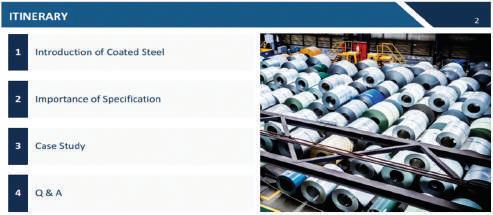
Figure 1: One of the presentation slides coated thickness. He added that type ‘AZ’ coating showed better corrosion resistance compared to type ‘Z’ coating and engineers should specify the coating mass to reduce premature corrosion failure. Higher coating mass means improved corrosion resistant. He then shared some case studies with participants.
Before the talk ended, Mr. Chum answered questions from the audience and gave clarifications in greater detail.
Congratulations to Tan Sri Dato’ Ir. Kunasingam a/l V. Sittampalam, on his election as International Fellow by the Royal Academy of Engineering, United Kingdom, in September.
This is in recognition of his outstanding and continuous contributions to the engineering profession, both nationally and internationally.

Until 30 September 2020 Flyer / Leaflet
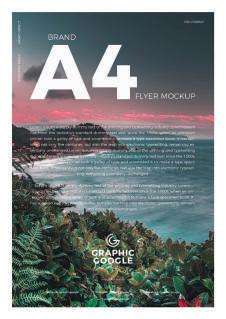


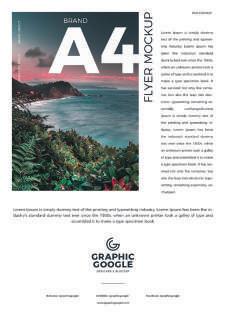



RM160
RM100
RM130
Until 30 September 2020




by Kok Fu Jie
Awebinar on Engineering Education: Pre, During & Post MCO by Ts. Dr Lau Chee Yong, provided insights into how online engineering teaching was conducted, in terms of formative and summative.
The goal of formative assessment is to monitor the students’ learning through ongoing feedback which instructors can then use to improve their teaching and students to improve their learning, while summative assessment is to evaluate students’ learning at the end of an instructional unit by comparing it against some standard or benchmark.

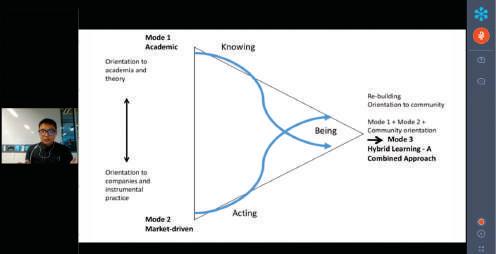
In addition, Dr Lau explained the importance of preparing students with fundamental engineering knowledge plus practical knowledge and competency to perform certain engineering tasks as required in the workplace. Two modes were presented. Mode 1 was academic style which allowed students to “know” the knowledge; Mode 2 was market-driven and allowed students to exercise their engineering skills. By combining these two, a third mode (known as Hybrid Learning)
was formed, with the aim to develop professionalism in students.
Problems faced during the recent Movement Control Order (MCO) were also discussed, such as:
1. Real-time problems (constructive and integrated) which were needed to deliver the intended learning outcomes
2. Fictional problems such as self-directed learning and lifelong learning along with outcome needed for teaching and learning activities and
3. Problem of stimulating critical thinking and metacognitive skills in students.
In a nutshell, Dr Lau delivered a remarkable webinar which attracted many participants.
The Institution of Engineers, Malaysia (IEM) congratulates our esteemed members from Sabah Branch on being conferred the respective awards by Tuan Yang Terutama, Yang di-Pertua Negeri Sabah, Tun Datuk Seri Panglima (Dr) Haji Juhar Bin Datuk Haji Mahiruddin in conjunction with his Excellency’s 67th Birthday on 3 October 2020
Ahli Setia Darjah Kinabalu (A.S.D.K.)
Ir. Jeffrey Ng Vun Ping, Sabah Branch Chairman
Ir. Ali Ahmad Bin Hamid, Former Sabah Branch Hon. Secretary
Ahli Darjah Kinabalu (A.D.K.)
Ir. Foo Shok Tong, Sabah Branch Co-Opt Member
Bintang Setia Kinabalu (B.S.K.)
Mr. Jack Lo Cheong Wah, Sabah Branch Co-Opt Member
Ir. Chua Yit Mien
Bintang Kinabalu (B.K.)
Ir. Dzulkarnain Bin Datuk Haji Dzulkifli
Justice of Peace (J.P.)
Ir. Tan Kok Jyh, B.S.K., Sabah Branch Hon. Secretary
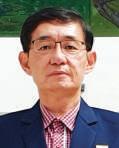
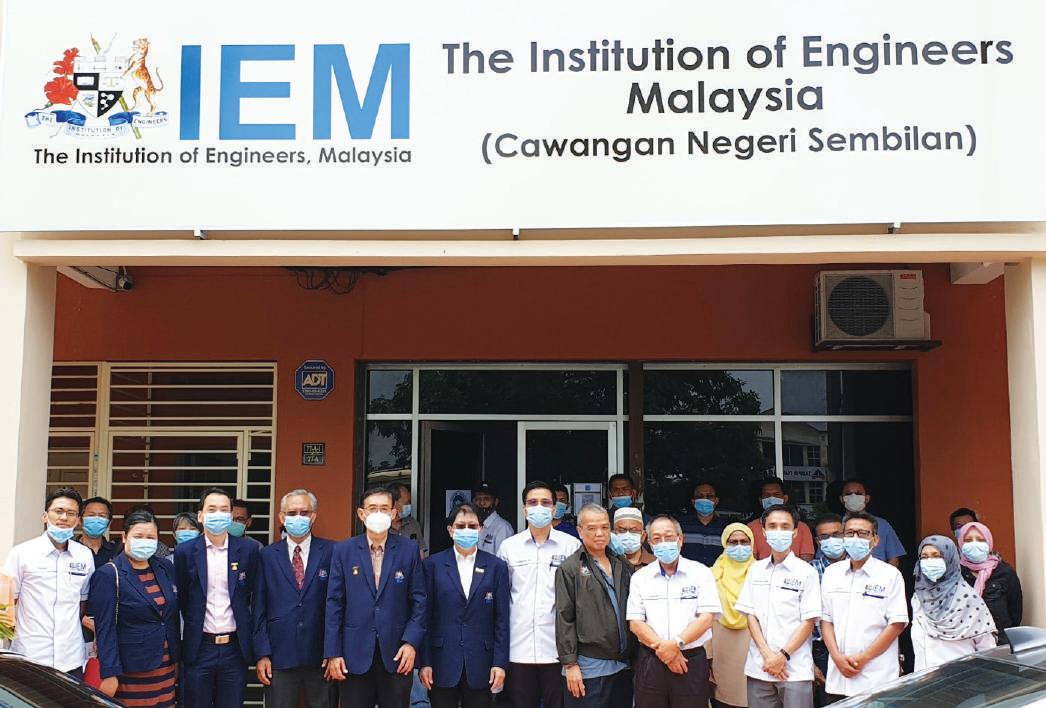
On 26 September 2020, The Institution of Engineers, Malaysia, Negeri Sembilan Branch (IEMNS) held its 27th Annual General Meeting at the IEM building in Oakland Commerce Square, Seremban. Present were 56 members, comprising 3 Fellows, 52 Members and a student. IEM President Ir. Ong Ching Loon, Vice President Ir. Dr Leong Wai Yie, Honorary Secretary Ir. Dr David Chuah Joon Huang and Council Member Ir. Fam Yew Hin also attended. Prior to the AGM, Ir. Prem Rakesh a/l Subramaniam, who
had worked for 15 years at the Tuanku Jaafar Power Station Port Dickson delivered an interesting talk on Generation of Power in Malaysia. The talk generated a lot of interaction and discussion among those who attended.
In his welcoming address, IEMNS Chairman (session 2019/2020), Ir. Dr Oh Seong Por thanked the President and HQ council members for their presence. He then announced that he would be retiring from the post of chairman at the end of the AGM.
He then gave a slide presentation of 54 programmes conducted during his 2-year tenure which were meant to benefit fellow members and/or the organisation.
A total of 1,398 individuals, comprising members, partners, government staffs, lecturers and students took part in the programmes and 90 CPD hours were clocked in for the technical visits, talks and AGMs. Apart from these, 13 activities were reported in the JURUTERA bulletin under the news from branch column.
From 2018 to 2020, 137 professional interviews and professional assessment examinations were conducted by IEMNS Corporate Members.
Ir. Dr Oh said IEMNS has been elevated to a higher level, with stable financial status, more members and is in a better position to conduct more diversified and inclusive programmes for members. The reputation of IEMNS had also improved. He added that these achievements were made possible because of teamwork by the committee members and dedicated secretariat staff Puan Suriya as well as undivided support from HQ team and IEMNS members. He bowed and thanked the audience before ending the speech with a Malay pantun:
Pelangi berwarna tujuh belang
Bila bercantum, putih menerang
Warga IEMNS berbagai bidang
Bila bergabung memang gemilang
Pelangi berwarna tujuh belang
Bila bercantum putih menerang
Akur SOP akur undang undang
Semoga corona boleh hilang.
In his address, President Ir. Ong Ching Loon congratulated Ir. Dr Oh and the committee members for the excellent effort to uplift IEMNS into a reputable branch. He continued by touching on the theme of his Presidential Speech, Augmenting IEM which he hoped would strengthen IEM by adopting the 4 strategies as follows:
1. To accentuate the branding of IEM
2. To position IEM as the essential technical hub nationally and internationally
3. To increase member value and engagement
4. To adopt the new normal and to boost IEM’s brand nationally and internationally.
Ir. Ong said that due to the COVID-19 pandemic, the IEM national convention originally planned for September this year, had been postponed to September 2021 at
KLCC. All engineering disciplines will be participating to promote science, technology, engineering and mathematics (STEM).
The AGM continued with presentations and confirmations of the minutes of the 26th AGM held on 24 August 2019, the annual report for 2019/2020 and financial statement ended 31 Dec 2019. Ir. Dr Oh thanked internal auditors Dato Ir. Chan Peng Chee and Ir. Tan Seong Lim for their services.
He also announced that, in accordance with branch guidelines, the committee members had, during the meeting on 10 July 2020, elected Ir. Chong Chee Yen as the next Chairman of IEMNS (2020/2021). Election officer Ir. Tiong Ngo Pu reported the election results of the committee members for 2020/2021.
As a final duty, Ir. Dr Oh presented letters of appreciation to Ir. Prem Rakesh and retiring committee members Dato Ir. Zainurin bin Hj Karman and Ir. Dr Noorazizi bin Mohd Samsudidin. A token of appreciation was also presented to President Ir. Ong Ching Loon.
In his inaugural address as Chairman, Ir. Chong Chee Yen reaffirmed the commitment to align IEMNS to the strategies explained by the President. He thanked all past chairman for their support and expressed gratitude Ir. Dr Oh for having lifted IEMNS to a higher level.
Chairman Ir. Chong Chee Yen
Vice Chairman I Ir. Arthirah binti Dato Bandharo
Vice Chairman II Ir. Richard Khoo Nee Keong
Honorary Secretary Ir. Hazlin bin Harun
Honorary Treasurer Ir. Kanna Dasan Narayanasamy
Ordinary Committee Members Ir. Mohd Firdaus bin Zainal
Ir. Azizi bin Ahamad
Ir. Chee Shai Choon
Ir. Prem Rakesh a/l Subramaniam
Immediate Past Chairman Ir. Dr Oh Seong Por

Bangkok is famous for its variety of markets, with each having its own uniqueness. Examples include the night market, farmer’s market, fresh market, floating market, flower market and railway market.
I am particularly fascinated by the Maeklong Railway Market because of its unique location. It is situated along a railway track. At specific times, trains pass right through the centre of the market which has stalls set up closely on both sides of the track. I had the opportunity to visit the railway market on a 6D/5N family trip to Bangkok and Hua Hin. We spent the first day in Bangkok, visiting temples and we dined at traditional restaurants.
The next morning, we headed for Maeklong Railway Market in Samut Songkram Province along the coastline of the Gulf of Thailand. It is about 60km southwest from downtown Bangkok, a 90-minute ride by bus. According to our tour guide, a Malaysian who had lived in Bangkok for over 10 years, Maeklong was originally a fishing district and the market was established in 1905 to sell mainly seafood, fruit and vegetables.
Later the government constructed a railway line to transport sea products to Bangkok and other parts of Thailand. The railway has a narrow track gauge of 1,000mm. Track gauge is the distance between the inner surfaces of the load bearing rails. Measuring 67km long, the railway connects Maeklong with Wongwian Yai, Bangkok and Samut Songkhram.
In 1906, the first train was hauled by three 0-4-2T wood-burning tank engines; in 1955, it was replaced with two Henschel 4-6-2 conventional steam engines. Then in 1957, a pair of Henschel 440hp 2-6-2 diesel locomotives were introduced to haul the cargo and passenger coaches. Over the years, more modern diesel engines were deployed in stages. It was reported
that the train service had the slowest cruising speed of 30 kms per hour.
When we arrived, the area was already thronging with people, locals and tourists. We alighted from our bus and walked 200m to reach the market. Near the entrance, we passed through a railway crossing gate meant to stop traffic whenever a train was approaching. We saw many motorcyclists trying to beat the gate as it was being closed, ignoring the no-crossing sign and alarm. As an engineer, I thought this was extremely dangerous and put the lives of not only motorists but also pedestrians and train passengers at risk. I was astonished to see tourists rushing towards the gate to take photographs without any concern for safety.
It looks like any ordinary market except for the railway track running through the centre. There are two rows of stalls lining the railway track. Each stall has a tent or awning designed to be quickly lowered or pulled back to provide adequate clearance for trains to pass through. Seafood, fresh fruit, vegetables and meat are displayed in various ways to attract buyers. There are also stalls selling shirts and souvenirs.
While we were there, we heard a loud horn sounded, followed by a charming bell alarm, the first signs of an approaching train. When the station master blew his whistle and announced in Thai through the PA system for the track to be cleared, all the sellers obediently and calmly pulled back their tents and awnings. Some goods however, were left on the ground with just sufficient space for the train to pass through. This procedure has earned market the nickname, Talad Rom Hup, which loosely translates as Close Umbrella Market.
We were shepherded to nearby stalls, away from the track area, as
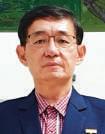

tourists prepared to capture shots of the approaching red and yellow train which steadily rolled by, just inches away from the stalls and wares. The train was passing so close by that one could actually touch it. I saw some tourists touching the moving carriage and they were clearly excited. Surprisingly there were no incidents or damage to the stalls or goods.
After the train had passed by, the sellers quickly re-assembled their tents and awnings to the original positions and continued on with their business as if nothing had happened. Locals continued on with their shopping and only tourists were still amazed. It was a fascinating sight! We joined the other tourists and followed the train which halted at Maeklong Station. Like them, we also snapped many photographs.
Visiting this unique market was indeed a wonderful experience. No wonder the Maeklong Railway Market was described as a heritage market and was previously featured on Discovery Channel.
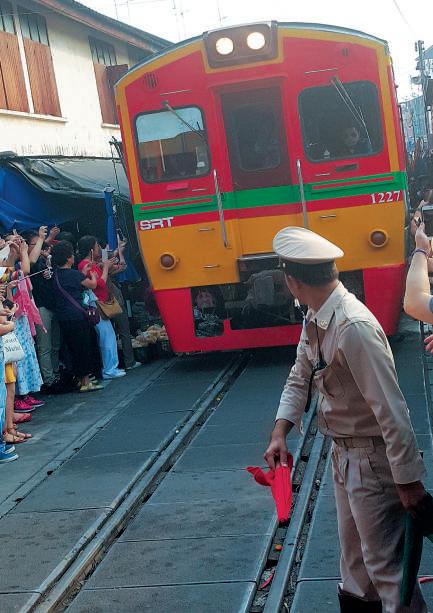
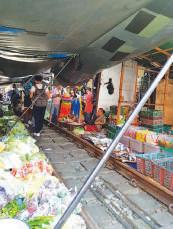
Kepada Semua Ahli,
Tarikh: 8 Oktober 2020
2020
Berikut adalah senarai calon yang layak untuk menduduki Temuduga Profesional bagi tahun 2020.
Mengikut Undang-Undang Kecil IEM, Seksyen 3.8, nama-nama seperti tersenarai berikut diterbitkan sebagai calon-calon yang layak untuk menjadi Ahli Institusi, dengan syarat bahawa mereka lulus Temuduga Profesional tahun 2020.
Sekiranya terdapat Ahli Korporat yang mempunyai bantahan terhadap mana-mana calon yang didapati tidak sesuai untuk menduduki Temuduga Profesional, surat bantahan boleh dikemukakan kepada Setiausaha Kehormat, IEM. Surat bantahan hendaklah dikemukakan sebulan dari tarikh penerbitan dikeluarkan.
Ir. Dr David Chuah Joon Huang Setiausaha Kehormat, IEM (Sessi 2020/2021)
PERMOHONAN BARU
Nama Kelayakan
KEJURUTERAAN AWAM
HAYATI BINTI ZAINAL BE HONS (UTM) (CIVIL, 2005) ME (NOTTINGHAM) (2013)
SURIA BINTI HALIM BE HONS (USM) (CIVIL, 1999) MSc (USM) (STRUCTURAL, 2007)
KEJURUTERAAN ELEKTRIK
WAN MOHD HAFIZ BIN HJ WAN SALIM BSc (ALBERTA) (ELECTRICAL, 2014)
KEJURUTERAAN MEKANIKAL
LONG JI MING BE HONS (ADELAIDE) (MECHANICAL, 2005)
SALMI BT MOHD YUNUS @ ABD WAHID BE HONS (UKM) (MECHANICAL, 2008) MSc (UKM) (MECHANICAL & MATERIALS, 2018)
TAN TENG VUI BE HONS (UMS) (MECHANICAL, 2014)
WAN MOHD AMIN BIN WAN SHUIB BE HONS (UPNM) (MECHANICAL, 2011) MSc (UPNM) (MECHANICAL, 2019)
PERMOHONAN BARU / PERPINDAHAN
MENJADI AHLI KORPORAT
Nama Kelayakan
KEJURUTERAAN ELEKTRIKAL
MOHAMED ADIB BIN ABD HAMID BE HONS (USM) (CIVIL, 2001)
WAN MOHD NAZRI BIN WAN IDRIS BE (UTM) (CIVIL, 1989)
PERPINDAHAN AHLI
No. Ahli Nama Kelayakan
KEJURUTERAAN AWAM
17697 AHMAD TARMIZI BIN MAT TAIB BE HONS (UiTM) (CIVIL, 2000)
21053 ISMACAHYADI BAGUS BIN MOHAMED JAIS BE HONS (UiTM) (CIVIL, 2002) MSc (NEWCASTLE UPON TYNE) (GEOTECHNICAL, 2004)
PhD (UiTM) (CIVIL, 2014)
31760 JAZURI BIN ABDULLAH BE HONS (UiTM) (CIVIL, 2004) MSc (STUTTGART) (WATER RESOURCES, 2007) PhD (COLORADO STATE) (2013)
88509 LEE CHUN HOONG BE HONS (UNISEL) (CIVIL, 2006)
20768 LIEW YUK SAN BE HONS (UTM) (CIVIL, 2003) MSc (USM) (RIVER & URBAN DRAINAGE MANAGEMENT, 2010)
71362 MUHAMMAD AFAIZ BIN ABDUL RAHMAN BE HONS (UTHM) (CIVIL, 2015)
29515 NG PIN YUAN BE HONS (UPM) (CIVIL, 2008) MSc (NUS) (CIVIL, 2017)
105231 SIM LIANG SHIN BE HONS (SWINBURNE) (CIVIL, 2011)
KEJURUTERAAN ELEKTRIKAL
102997 LIM SENG BAN BE HONS (HERTFORDSHIRE) (ELECTRICAL & ELECTRONIC, 1997)
80649 MOHD AZREE BIN MOHD NOOR BE HONS (UniMAP) (ELECTRICAL SYSTEMS, 2009) ME (UTHM) (ELECTRICAL, 2012)
49867 FIRDAUS BIN MOHAMAD BE HONS (UTM) (ELECTRICAL, 2003)
24758 LIM CHI YEE BE HONS (NOTTINGHAM TRENT) (ELECTRICAL & ELECTRONIC, 2002) HND (NOTTINGHAM TRENT) (ELECTRICAL & ELECTRONIC, 2001)
KEJURUTERAAN ELEKTRONIK
80690 TAN SIN JIN BE HONS (UTM) (ELECTRICALTELECOMMUNICATION, 2006) ME (MALAYA) (2010) PhD (MALAYA) (2014)
KEJURUTERAAN MEKANIKAL
25598 CHAN LING KET BE HONS (UTM) (MECHANICAL-MARINE TECHNOLOGY, 2001)
111128 DALBIR SINGH A/L ATAR SINGH BE HONS (UTM) (MECHANICAL, 2005)
56349 GOH CHUN SHIAN BE HONS (UTHM) (MECHANICAL, 2012)
99365 KHOO SONG HENG BE HONS (LOUGHBOROUGH) (MECHANICAL & MATERIALS, 1993)
61937 KHOR KOK KUAN BE HONS (MONASH) (MECHANICAL, 2013)
50137 MOHD FAIZAL FAUZAN BE HONS (THE UNIVERSITY OF NOTTINGHAM) (MECHANICAL, 2008) ME (MALAYA) (2011) PhD (MALAYA) (2015)
31137 MOHD SHAHRUDIN BIN MOHD ALIAS BE HONS (UPM) (MECHANICAL, 2010) MSc (UiTM) (MECHANICAL, 2017)
43581 MOHD SOLEHAM JURAIMI BIN KAMARUDIN BE HONS (UiTM) (MECHANICAL, 2010)
100690 MOHD SYAFIQ HAFIFI BIN KAMISAN BE HONS (UiTM) (MECHANICAL, 2012)
66530 MUHAMAD NAZRI BIN MOHD RIFFIN BE HONS (UTHM) (MECHANICAL, 2010)
38252 MUHAMMAD IZZUL HAQ BIN ABU RAHIM BE HONS (UiTM) (MECHANICAL, 2012) ME (UKM) (MECHANICAL, 2017)
66120 THIRUSELVAM A/L VELLOO BE HONS (UNITEN) (MECHANICAL, 2013)
KEJURUTERAAN MEKATRONIK
93855 TAY KHENG LIANG, BONAVENTURE BE HONS (UniMAP) (MECHATRONICS, 2009)
KEJURUTERAAN PERKHIDMATAN BANGUNAN
71617 NAGENTRAU A/L MUNIANDY BE HONS (UTHM) (MECHANICAL, 2014)
KEJURUTERAAN SUMBER AIR
95808 UMI NADRAH BT ABDUL GHANI BE HONS (UiTM) (CIVIL, 2014) MSc (UiTM) (CONSTRUCTION, 2018)
KEJURUTERAAN TELEKOMUNIKASI
55840 LEE VOON HIAN BE HONS (THE UNIVERSITY OF NEW SOUTH WALES) (TELECOMMUNICATIONS, 2011) ME (THE UNIVERSITY OF SYDNEY) (NETWORK ENGINEERING, 2012)
PERMOHONAN BARU / PERPINDAHAN MENJADI AHLI KORPORAT No. Ahli Nama Kelayakan
KEJURUTERAAN AWAM
70277 NGIAM KEE HWEE BSc HONS (OKLAHOMA) (CIVIL, 1996)
KEJURUTERAAN ELEKTRIKAL
72220 KOO LI CHIAT BE HONS (UNITEN) (ELECTRICAL & ELECTRONICS, 2010)
66526 MOHAMMED REYASUDIN BIN BASIR KHAN BE HONS (UNITEN) (ELECTRICAL & ELECTRONICS, 2011) PhD (UNITEN) (2016)
KEJURUTERAAN MEKANIKAL
66705 LAU CHIN SHENG BE HONS (NUS) (MECHANICAL, 2008)
64837 MOHD HAZWAN BIN MOHAMED HANIFFA BE HONS (MECHANICAL, 2007)


CONTINUATION FROM OCTOBER ISSUE 2020
PERMOHONAN MENJADI AHLI SISWAZAH No. Ahli Nama Kelayakan
KEJURUTERAAN AWAM
105927 SOH KEE JUN
107569 HO EN XIANG
107633 KHAIRUL AZIM BIN ABDUL KARIM
B.E. HONS.(CURTIN UNI. OF TECH.)(CIVIL & CONTRUCTION, 2017)
M.Sc.(THE UNI. OF NOTTINGHAM)(CIVIL, 2019)
106128 SOO KAI YAO BE HONS (UNITEN)(CIVIL, 2017)
107637 TAN WENG SOON BE HONS (USM)(CIVIL, 2000)
106143 TANG HUH PENG BE HONS (SWINBURNE UNI. OF TECH.)(CIVIL, 2015)
105929 THEIVIGAA A/P SELOKUMAR BE HONS (UniMAP) (CIVIL, 2017) MSc (USM)(STRUCTURAL, 2018)
105794 TING FANG QING, RICHARD
105786 VOON YEN KING
B.E. HONS.(IUKL)(CIVIL, 2018)
B.E. HONS.(UNIMAS) (CIVIL, 2014)
M.E.(UNIMAS)(CIVIL, 2016)
105913 WAN MUAAZAM BIN W MUHAMMAD BE HONS (UiTM)(CIVIL, 2011)
105772 WONG DAO JIE B.E. HONS.(MONASH UNI.) (CIVIL, 2018)
105795 WONG WENG YEE M.E. HONS.(UNI. of NEWCASTLE upon Tyne) (CIVIL, 2018)
106163 YAP KANG NING, KELVIN ME HONS (THE UNI. OF SHEFFIELD)(CIVIL & STRUCTURAL, 2018)
106123 YAP YONG LE ME HONS (THE UNI. OF NOTTINGHAM)(CIVIL, 2018)
107618 YAU HAO CHE BE HONS (MONASH UNI.) (CIVIL, 2014)
KEJURUTERAAN BAHAN
107636 HAFIZ AMIN BIN SUHAIMI BE HONS (IIUM) (MATERIALS, 2014)
KEJURUTERAAN BIOKIMIA
105781 MOHD HAFIZAL BIN AWANG B.E. HONS.(IIUM) (BIOCHEMICALBIOTECHNOLOGY, 2012) M.E.(UPM) (ENVIRONMENTAL, 2018)
105765 MUHAMMAD 'AINUDDIN BIN ZAMERY B.E. HONS.(IIUM) (BIOCHEMICALBIOTECHNOLOGY, 2014)
KEJURUTERAAN BIO-PERUBATAN
107623 GOH WEN JUN BE HONS (UniMAP) (BIOMEDICAL ELECTRONIC, 2013)
107630 MAIZATUL AKMAL BINTI ABDUL MUTTLIB BE HONS (UNI. OF MALAYA)(BIOMEDICAL, 2013) ME (UNI. OF MALAYA) (BIOMEDICAL, 2017)
KEJURUTERAAN ELEKTRIKAL
105931 AHMAD KHAIRUL ZA'IM BIN ISMAIL B.E. HONS.(UiTM) (ELECTRICAL, 2008) 106161 ANI DAYANA BINTI YUNUS BE HONS (UniMAP) (ELECTRICAL ENERGY SYSTEMS, 2016) 106145 AW WENG SOON BE HONS (MONASH UNI.)(ELECTRICAL & COMPUTER SYSTEMS, 2009)
105792 AZRA AIZA BINTI HARUN B.E. HONS.(UTeM) (ELECTRICAL-INDUSTRIAL POWER, 2016)
106132 CHONG ZHEN QUAN BE HONS (UNI. OF MALAYA)(ELECTRICAL, 2016)
107573 CHOY JIN SHEN BE HONS (UTAR SG LONG)(ELECTRICAL & ELECTRONIC, 2019)
107641 DR HADI NABIPOURAFROUZI BSc (ISLAMIC AZAD UNI.) (POWER ENGINEERING/ ELECTRONIC, 2005) ME (UTM)(ELECTRICALPOWER, 2011) PhD (UTM)(ELECTRICAL, 2015)
105917 FATIMAH ZAHARAH BINTI ALI B.E. HONS.(UTP) (ELECTRICAL & ELECTRONICS, 2009) M.Sc.(UiTM) (TELECOMMUNICATION & INFORMATION ENGINEERING, 2012)
107572 HENG YING JIE BE HONS (UTAR SG LONG)(ELECTRICAL & ELECTRONIC, 2019)
BE HONS (UTAR SG LONG)(ELECTRICAL & ELECTRONIC, 2019)
BE HONS (UNI. OF CANTERBURY) (ELECTRICAL & ELECTRONIC, 2017)
107567 LEE SHI FAN BE HONS (UTAR SG LONG)(ELECTRICAL & ELECTRONIC, 2019)
105671 LIM LIP
107643 LING NGUANG CHIONG, POLYCARP
107653 MD AFANDI BIN ATAN
105796 MOHAMED MEERA HUSSIEN BIN JAWHAR SATHIK
105793 MOHD AFIZ BIN CHE MUSTAPHA
B.E. HONS.(UTM) (ELECTRICALELECTRONICS, 2015)
BE (TOYOHASHI UNI. OF TECH.)(ELECTRICAL & ELECTRONIC, 2017)
BE HONS (UiTM) (ELECTRICAL, 2011)
B.E. HONS.(UTP) (ELECTRICAL & ELECTRONIC, 2014)
B.E. Tech.(HONS.)(UNIKL) (ELECTRICAL, 2013) BEM GRADUATE ENGINEER REGISTRATION BRIDGING COURSE (UniKL BET) (ELECTRICAL, 2019)
107620 MOHD ARIF SAFIUDDIN BIN MOHD NOOR BE HONS (UiTM) (ELECTRICAL, 2013)
105764 MOHD HAFIZZUDIN BIN ISMAIL
105775 MOHD HILMI BIN ABD MOKHTI
B.E. HONS.(UTeM) (ELECTRICAL-POWER ELECTRONIC & DRIVE, 2012)
B.E. Tech. (HONS.)(UNIKL) (ELECTRICAL, 2013) BEM GRADUATE ENGINEER REGISTRATION BRIDGING COURSE (UniKL BET) (ELECTRICAL, 2019)
106167 MOHD JALALUDDIN BIN HASSAN BE HONS (UiTM) (ELECTRICAL, 2014)
105784 MOHD NAZRIN BIN NAZAM AZHARI
106158 MOHD ZULKARNAIN BIN ABDUL RAHMAN
105771 MOU KAR JUNN
106157 MUHAMAD KHAIRI HAKIM BIN JAAFAR
107593 MUHAMMAD AZIM SHAH BIN BADLI SHAH
107610 MUHAMMAD HADI SYAFIQ BIN KAMARUDDIN
105918 NADIA FARADILA BINTI JALAWI
B.E. HONS.(UiTM) (ELECTRICAL, 2014)
BE HONS (USM) (ELECTRICAL, 2008)
B.E. HONS.(UNI. OF MALAYA)(ELECTRICAL, 2016)
BE HONS ( UiTM) (ELECTRICAL, 2014)
BE HONS (UNITEN) (ELECTRICAL POWER, 2019)
BE HONS (UiTM) (ELECTRICAL, 2013)
B.E. HONS.(UiTM) (ELECTRICAL, 2011)
106122 NASYIRAH BINTI MUSTAPHA BE HONS (UTM) (ELECTRICAL, 2005)
105922 NG LIK HONG
106134 NUR ATHARAH BINTI KAMARZAMAN
105776 NUR ATIQAH BINTI ABDUL RAHMAN
B.E. HONS.(UTM) (ELECTRICAL, 2018)
BE HONS (UiTM) (ELECTRICAL, 2010) ME (UTM)(ELECTRICALPOWER, 2013)
B.E. HONS.(UiTM) (ELECTRICAL, 2011) M.E.(UiTM)(ELECTRICAL, 2014)
106142 SATISHRAO POTHORAJOO BE HONS (UMP) (ELECTRICAL-POWER SYSTEM, 2016)
107604 SHARIFAH FARAHANA FITRAH BT SYED IDRIS ME (UNI. OF THE WEST OF ENGLAND BRISTOL)(ELECTRICAL & ELECTRONIC, 2015)
107565 SIE RONG BE HONS (UTAR SG LONG)(ELECTRICAL & ELECTRONIC, 2019)
107563 TAN JIA CHING, CHRISTINA BE HONS (UTAR SG LONG)(ELECTRICAL & ELECTRONIC, 2019)
107607 THILAGAM GOVINDASAMY BE HONS (UTM) (ELECTRICAL, 2010)
107612 TIE CHIN HO BE HONS (UTeM) (ELECTRICAL-INDUSTRIAL POWER, 2012) MSc (UTeM)(ELECTRICAL, 2015)
106150 TING CHEK HOE BE HONS (UMS) (ELECTRICAL & ELECTRONICS, 2017)
KEJURUTERAAN ELEKTRONIK
106155 AHMAD BIN ABAS BE HONS (UiTM) (ELECTRICAL, 2011)
105914 AMINAMUL SAIDAH BINTI MAD NORDIN BE HONS (UiTM) (ELECTRICAL, 2007)
105770 DR AMIRJAN BIN NAWABJAN B.E. HONS.(UTM) (ELECTRICALTELECOMMUNICATIONS, 2009) PhD.(UNI. Of SOUTHAMPTON) (ELECTRONICS & ELECTRICAL, 2016)
107622 DR MARWAN NAFEA BSc (SEBHA UNI.) (ELECTRONIC, 2010) ME (UTM) ELECTRICALMECHATRONICS & AUTOMATION CONTROL, 2013) PhD (UTM)(ELECTRICAL, 2018)
106147 HADI BIN JUMAAT BE HONS (UiTM) (ELECTRONICCOMMUNICATION, 2012) ME (UiTM)(ELECTRICAL, 2015)
105669 JAMALULAIL BIN HAJI KASMIN B.E. HONS.(UNI. OF PORTSMOUTH) (ELECTRONIC & ELECTRICAL, 1996)
107574 LOW SHEN HUI BE HONS (UTAR KAMPAR) (ELECTRONIC, 2019)
107650 MA CHOON KEAT BE HONS (UNITEN) (ELECTRICAL & ELECTRONIC, 2004)
106210 MD YUZEIRY BIN MD YASIN BE HONS (UTM) (ELECTRICALELECTRONICS, 2002)
105780 MOHAMMAD FATHI BIN MD ALI B.E. HONS.(MMU) (ELECTRONICSMICROWAVE & COMMUNICATIONS, 2008)
107644 MUHAMMAD ALIFF BIN HASSAN BE HONS (UTeM) (ELECTRONIC-COMPUTER, 2015)
105773 MUHD FIRDAUS BIN MUHD YUSOFF B.E. HONS.(UTM) (ELECTRICALMICROELECTRONICS, 2011)
M.E.(UTM)(ELECTRICALCOMPUTER & MICROELECTRONIC SYSTEM, 2015)
105777 PHANG TZE YEONG B.E. HONS.(UMIST & THE VICTORIA UNI. OF MANCHESTER) (ELECTRICAL & ELECTRONIC, 1997)
105675 REVI ANDRAN A/L GOVINDAN B.Sc.(UNI. Of ABERDEEN) (ENGINEERING, 1988)
105769 SHANMUGAMANI RAMAKRISHNAN B.E. HONS.(UTM) (ELECTRICALELECTRONICS, 2003)
106156 TEOH TEIK JIN, DERREN BSc (UNI. OF SOUTHERN CALIFORNIA)(ELECTRICAL, 1988)
106149 WAN ZAMZULRI BIN WAN IBRAHIM BE HONS (UniMAP) (MECHATRONIC, 2007) MSc (UiTM) (TELECOMMUNICATION & INFORMATION, 2017)
KEJURUTERAAN HYDRAULIK
105920 MARY LOW B.Sc.(NATIONAL CHENG KUNG UNI.)(HYDRAULIC & OCEAN UNI., 2013) M.Sc.(NATIONAL CHENG KUNG UNI.)(2016)
KEJURUTERAAN INDUSTRI
107585 CHONG KAR HOE BE HONS (UTAR KAMPAR) (INDUSTRIAL, 2019)
KEJURUTERAAN KIMIA
107639 BALVINDER SINGH BE HONS (SEGi) (CHEMICAL, 2017)
107575 CHIN JIAN YEAN BE HONS (UTAR KAMPAR) (PETROCHEMICAL, 2019)
107586 CHONG CHOON KEAT BE HONS (UTAR KAMPAR) (PETROCHEMICAL, 2019)
107584 CHUN GIM THIAM BE HONS (UTAR KAMPAR) (PETROCHEMICAL, 2019)
106154 DR BELLADONNA TROXYLON MAULIANDA BE (THE UNI. OF INDONESIA) (CHEMICAL, 2005) PhD (THE UNI. OF CALGARY)(CHEMICAL & PETROLEUM, 2016)
107592 DR YIIN CHUNG LOONG BE HONS (UTP) (CHEMICAL, 2013) MSc (UTP) (CHEMICAL, 2016) PhD (UTP)(CHEMICAL, 2019)
107583 FAROUK AZIM BIN ABD RAHMAN BE HONS (UTAR KAMPAR) (PETROCHEMICAL, 2019)
107582 HENG SU CIN BE HONS (UTAR KAMPAR) (PETROCHEMICAL, 2019)
107571 HENG ZENG WEI BE HONS (UTAR SG LONG) (CHEMICAL, 2019)
107594 KHONG LAI YEE BE HONS (UKM)(CHEMICAL & PROCESS, 1992)
105791 KHOO LYNN HUI B.E. HONS.(UCSI UNI.) (CHEMICAL, 2018)
106137 KUEH JUN KIT BE HONS (UTAR) (CHEMICAL, 2019)
107568 KWAN HUA ZUNG BE HONS (UTAR SG LONG) (CHEMICAL, 2019)
106162 LAVANIA SUGU BE HONS (CURTIN UNI.) (CHEMICAL, 2018)
107581 LEOW GUO QUAN BE HONS (UTAR KAMPAR) (PETROCHEMICAL, 2019)
107591 MOHD FARHAN BIN RAMLAN BE HONS (UiTM) (CHEMICAL, 2012)
106135 MOHD SUFYAN BIN MOHD ALI BE HONS (UTM) (CHEMICAL-POLYMER, 2010)
107640 MUHAMMAD AZAMUDDIN BIN HASSAN BSc (UNI. OF COLORADO) (CHEMICAL, 2018)
107599 MUHAMMAD FATTHULHANIF BIN OTHMAN BE HONS (UTM) (CHEMICAL, 2018)
107580 NG LI QUAN BE HONS (UTAR KAMPAR) (PETROCHEMICAL, 2019)
107566 PAN WEN TONG BE HONS (UTAR SG LONG) (CHEMICAL, 2019)
107579 PREMALA A/P GOPALAN BE HONS (UTAR KAMPAR) (PETROCHEMICAL, 2019)
106144 RAAJESWARI A/P RADAHAKRISHNAN BE HONS (SEGi UNI.) (CHEMICAL, 2019)
107602 SHATHISKUMAR A/L THAMILARASAN BE HONS (UCSI UNI.) (CHEMICAL, 2015)
105919 SURIATIE BINTI MAT YUSUF B.E. HONS.(UiTM) (CHEMICAL, 2009) M.E.(UTM)(PETROLEUM, 2013)
107564 TAN AIK HORNG, JASON BE HONS (UTAR SG LONG) (CHEMICAL, 2019)
107578 THAYALA DASS A/L RAVEENDRAN BE HONS (UTAR KAMPAR) (PETROCHEMICAL, 2019)
107577 TIEW JOON TIAN BE HONS (UTAR KAMPAR) (PETROCHEMICAL, 2019)
107562 TING ZE XIAN BE HONS (UTAR SG LONG) (CHEMICAL, 2019)
107576 WONG JIAN YU BE HONS (UTAR KAMPAR) (PETROCHEMICAL, 2019)
107634 WOON HUI LING BE HONS (UTAR) (CHEMICAL, 2019)
107561 YUEN JIE CHENG BE HONS (UTAR SG LONG) (CHEMICAL, 2019)
KEJURUTERAAN KOMUNIKASI
107654 SITI AISYAH BINTI ABDUL RASHID BE HONS (IIUM) (COMMUNICATION, 2017)
KEJURUTERAAN MEKANIKAL
107648 ABDUSSALAM KHAN BIN MUSTAFA KHAN BE HONS (UNIMAS) (MECHANICAL & MANUFACTURING, 2016)
105754 AHMAD HASSANII BIN AB SATAR B.E. HONS.(UTP) (MECHANICAL, 2018)
105767 AHMAD ZAHIR BIN HASHIM B.E. HONS.(UNITEN) (MECHANICAL, 2016)
105916 AMIRUL AIMAN BIN MOHD RADUAN B.E. HONS.(UiTM) (MECHANICAL, 2018)
107628 DR PRAVEENA NAIR A/P SIVASANKARAN BE HONS (UMP) (MECHANICAL with MANUFACTURING, 2009) PhD (UNIVERSITY OF MALAYA)(ADVANCE MATERIALS/ NANOMATERIALS, 2016)
105783 HAH KWEE SIN B.E. HONS.(UNI. OF MALAYA)(MECHANICAL, 1976)
107570 HENRY DASS A/L TEVATUS BE HONS (UTAR SG LONG) (MECHANICAL, 2019)
105774 HOW CHOON HUI B.E. HONS. (UNI OF SUNDERLAND) (MECHANICAL, 2013) M.E.(UPM) (MANUFACTURING SYSTEMS, 2018)
107609 JOHN MATHEWS A/L GEORGE MATHEWS BE HONS (INTI INT. UNI.) (MECHANICAL, 2018) 105674 LEE CHIN HANN, AARON B.E. HONS.(UNITEN) (MECHANICAL, 2011) M.Sc.(KING'S COLLEGE LONDON)(ENGINEERING with BUSINESS MANAGEMENT, 2012)
107608 LIM KEWEI BE HONS (UNI. OF MALAYA)(MECHANICAL, 2007)
107597 LOKMAN HAKIMI JUSOH @ YUSOFF BE HONS (UTP) (MECHANICAL, 2004)
105789 MOHAMAD ARIFF BIN ZAINAL RASHID M.E. HONS. (LOUGHBOROUGH UNI.) (MECHANICAL, 2018)
105766 MOHAMAD FIRDAUS BIN A ZULKIFLEE B.E. HONS.(UniMAP) (MECHANICAL, 2016)
107596 MOHAMAD MASRIHAN BIN SIBOR BE HONS (UTM) (MECHANICAL, 2018)
105695 MOHAMAD SHAFRIZAL BIN MOHAMAD RAZIFF B.E. HONS.(MALAYA) (MECHANICAL, 2006)
107605 MOHD FAHKRUL RAZZI BIN ROSLI BE HONS (UNITEN) (MECHANICAL, 2012)
107625 MOHD NURUL AMIN BIN ADNAN BE HONS (UTP) (MECHANICAL, 2009)
107606 MUHAMMAD FAIZ BIN JAAFAR BE HONS (UTM) (MECHANICAL, 2015) MSc (UTM)(MECHANICAL, 2017)
105670 NAZIADIN BIN ABD GHANI B.E. HONS.(UPM) (MECHANICAL, 2001)
105915 NUR BAIZURA BINTI BARDI B.E. HONS.(UTM) (MECHANICAL, 2018) 107615 ONG CHOO YIE BS (THE UNI. OF TENNESSEE) (MECHANICAL, 2007)
105925 POH AIK CHONG B.E. HONS.(MMU) (MECHANICAL, 2011)
106152 POOVEN RAJ MANOHARAN BE HONS (UNITEN) (MECHANICAL, 2013)
106136 RAJA NURUL YUHANIS RAJA ABDUL RAZAK
ME HONS (UNI. OF SOUTHAMPTON) (MECHANICAL, 2013)
106133 SAW EE VERN BE HONS (SWINBURNE UNI. OF TECH.) (MECHANICAL, 2017)
107601 SRI KUMARAN UVARAJA BE HONS (UMS) (MECHANICAL, 2016)
107603 TAN ZHI ZHONG BE HONS (INTI INT. UNI.) (MECHANICAL, 2015) ME (UNI. OF BRADFORD) (MECHANICAL, 2017)
106131 UMA SHANKAR A/L BALAKRISHNAN BE HONS (UTM) (MECHANICAL-MARINE TECH., 2009)
106146 VISHUL A/L SURESH BE HONS (UNI. OF SUNDERLAND) (MECHANICAL, 2012) MSc (UNI. OF SOUTH WALES)(SUSTAINABLE POWER TECHNOLOGY, 2014)
106148 VIVEKANANTHEN A/L SREEDARAN BE HONS (UNITEN) (MECHANICAL, 2014) ME (UNITEN) (MECHANICAL, 2018)
106129 YAL CARLOSTINE JEFFERSON BE HONS (UTM) (MECHANICAL, 2019)
107616 YAP WEI XIN ME HONS (LOUGHBOROUGH UNI.) (MECHANICAL, 2014)
105930 YOGESWARAN V SUPRAMANIAM BE HONS (MONASH UNI.) (MECHANICAL, 2012)
KEJURUTERAAN MEKATRONIK
106164 DR CHU YIH BING BE HONS (MONASH UNI.) (MECHATRONICS, 2012) PhD (MONASH UNI.)(2016)
107600 MOHAMAD HAFIZI BIN SUKI BE HONS (UniMAP) (MECHATRONICS, 2015)
107651 MUHAMMAD SYAFIQ BIN MOHD YUSOF BE HONS (IIUM) (MECHATRONICS, 2017) MSc (IIUM) (MECHATRONICS, 2018)
KEJURUTERAAN METALLURGI
106140 DR AMIR AZAM KHAN BSc (UNI. OF ENGINEERING & TECHNOLOGY LAHORE) (METALLURGICAL ENGINEERING & MATERIALS SCIENCE, 1988) D.E.A (UNI. OF LIMOGES) (CERAMIC MATERIALS SCIENCE & SURFACE TREATMENTS, 1991) PhD (UNI. OF LIMOGES) (CHEMISTRY & PHYSICAL CHEMISTRY-MATERIALS SCIENCE, 1995)
KEJURUTERAAN PEMBUATAN
105912 LOGISH KUMAR A/L CHANDRA SEGARAN BE HONS (UTeM) (MANUFACTURINGROBOTICS & AUTOMATION, 2014)
106127 NUR ADIBAH BINTI ABDUL RAHIM BE HONS (USM) (MANUFACTURING ENGINEERING with MANAGEMENT, 2018)
KEJURUTERAAN PERLOMBONGAN
106153 DR HOUMAN SOHAEI BE (ISLAMIC AZAD UNI.)(APPLIED SCIENTIFIC MINING ENGINEERING, 2006) ME (UTM)(CIVILGEOTECHNICS, 2012) PhD (UTM)(CIVIL, 2017)
KEJURUTERAAN PERTANIAN
105923 ABD RAHIM BIN SHUIB B.E. HONS.(UPM) (AGRICULTURAL, 1984)
KEJURUTERAAN PETROLEUM
107614 YOHANIS ACHING BE HONS (UTM) (PETROLEUM, 2019)
KEJURUTERAAN TELEKOMUNIKASI
107629 DR SITI ZURAIDAH BINTI IBRAHIM BE HONS (UNI. OF MALAYA) (TELECOMMUNICATION, 2004) ME (UTM)(ELECTRICALCOMMUNICATION, 2008) PhD (THE UNI. OF QUEENSLAND) (ELECTRICAL, 2012)
PERMOHONAN MENJADI AHLI ‘INCORPORATED’ No. Ahli Nama Kelayakan
KEJURUTERAAN ELEKTRIKAL
105932 DATO' MUHAMMAD ISOM BIN AZIS B.E. TECH. HONS. with Edu. (UTM) (ELECTRICAL, 1993)
107589 ZAHRAA AZEEZ ABDULLATEEF MATLAB BSc (UNIVERSITY OF BABYLON)(ELECTRICAL, 2008) ME (UNITEN)(ELECTRICAL, 2015)
KEJURUTERAAN MEKANIKAL
105697 LIM KHIN YONG B.E.HONS.(LIVERPOOL JOHN MOORES UNI.) (MECHANICAL & MANUFACTURING, 2002)
105696 MADUSOODANAN A/L K A NAIR B.Sc.(UNI. OF CALICUT) (MECHANICAL, 1976)
KEJURUTERAAN POLIMER
105933 DR CHEW KHOON HEE B.E.Tech.Hons.(USM) (POLYMER TECHNOLOGY, 1991)
MBA.(UNI. OF PORTMOUTH)(2005) PhD.(USM)(1999)
PERMOHONAN MENJADI AHLI ‘AFFILIATE’ No. Ahli Nama Kelayakan
KEJURUTERAAN KIMIA
107588 DR CHOW WEI LING BSc (THE UNIVERSITY OF NOTTINGHAM)(PLANT BIOTECHNOLOGY, 2013) PhD (THE UNIVERSITY OF NOTTINGHAM)(2019)
PERMOHONAN MENJADI AHLI ‘ASSOCIATE’ No. Ahli Nama Kelayakan
KEJURUTERAAN MEKANIKAL
106211 FONG KOK SANG DIPL. TECH.(TARC) (MECHANICAL & AUTOMOTIVE, 1986)
Note: Continuation would be published in December 2020. For the list of approved “ADMISSION TO THE GRADE OF STUDENT”, please refer to IEM web portal at http://www. myiem.org.my.
Pengumuman yang ke-144
Institusi mengucapkan terima kasih kepada semua yang telah memberikan sumbangan kepada tabung Bangunan Wisma IEM. Ahli-ahli IEM dan pembaca yang ingin memberikan sumbangan boleh berbuat demikian dengan memuat turun borang di laman web IEM http://www.iem. org.my atau menghubungi secretariat di +603-7968 4001 / 5518 untuk maklumat lanjut. Senarai penyumbang untuk bulan September 2020 adalah seperti jadual di bawah:
NO. NO. AHLI NAMA
Yes! I would like to be a subscriber of The Institution of Engineers, Malaysia’s publications
Name: _________________________________________________________________________________________________________
Mailing Address: _________________________________________________________________________________________________
Country: ________________________
Company/Institution: ______________________________________________________________________________________________
Title: ____________________________________________________________________________________________________
Telephone No: _________________________ Fax: _________________________ Email: _________________________________
New Subscriber Renewal
Please commence my subscription from: _________________________(month/year) Signature: _______________________________
To start your subscription of IEM’s publications, complete this form and mail it back to the address below. For faster processing, fax it to: +603 7493 1047. Thank you.
What is your primary job title?
Corporate Management (including chairman, president, proprietor, partner, director, vice president, general manager, division manager, import/export manager, other corporate title)
Management (including project/contract/equipment/service/transport district manager, clerk of works, other technical or operating manager)
Engineering/Design (including chief engineer, chief designer, civil/ highway/mechanical/planning engineer, other engineering/design title)
Buying/Purchasing (including chief buyer, buyer, purchasing officer, other buying/purchasing title)
Titles allied to the field (architect, consultant, surveyor, research and development professor, lecturer, supervisor, superintendent, inspector or other allied title)
Others (please specify) ____________________________
What type of organisation do you work in? (Tick one box only)
Contractor
Sub-contractor specialist
Design and build contractor
Consulting engineering/architectural/quantity surveying practice
Mining/quarrying/aggregate production company
Petroleum producer
International/national authorities
National/regional/local government
Public utilities (electricity, gas, water, deck and harbour, other)
Manufacturer
Distributor/importer/agent
Construction department of large industrial/Commercial concern
Association/education establishment/research
Construction equipment hire/rental company
Project/construction management consultancy
Others (please specify) _______________________________
What are the main activities of your organisation? (Tick all that apply)
Constructions of:
Roads/bridges

Manufacturer of:
Construction equipment
Dams/reservoirs/irrigation Cement
Harbours/offshore structures Other construction materials
Foundations/tunnels Distribution Pipelines/refineries Construction equipment
Structures/steel work Construction materials
Building (commercial, industrial) Hire/rental of construction equipment
Housing Design
Construction management Earth-moving/open cast mining Deep mining Aggregate production
Others (Please specify) _________________________________________
Rate (Please tick)
RM360.00 - 12 issues of JURUTERA
RM84.00 - 2 issues IEM Journal (Half-yearly)
Terms and Conditions:
1) The subscription is to be prepaid.
2) Please make cheque payable to Dimension Publishing Sdn. Bhd.
3) Subscriptions are not refundable.
4) Magazine/s will be sent to the mailing address given.
5) Students are entitled for a 20% discount from the above subscription rate.
6) Students must submit a photocopy of the student identification card together with the payment.
7) The above rate is inclusive of delivery charges and applicable in Malaysia only.
8) Additional delivery charges will apply to overseas subscribers.
For subscription enquiries, please contact +603-7493 1049 or email to info@dimensionpublishing.com













